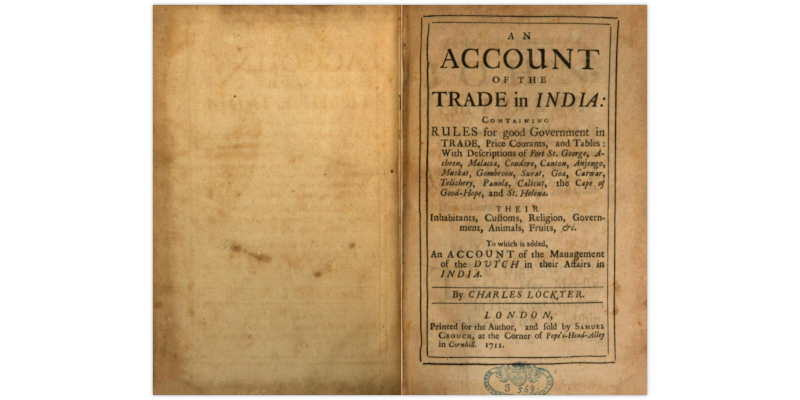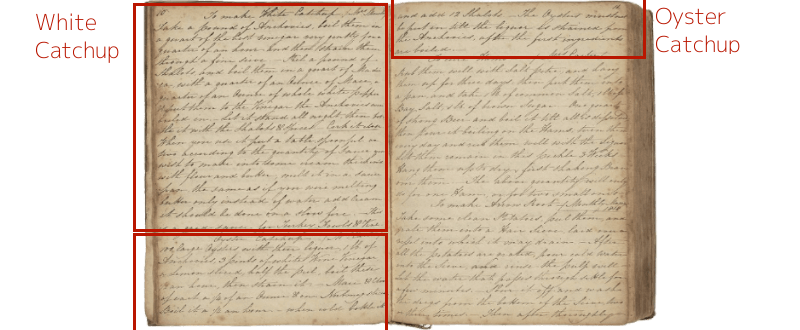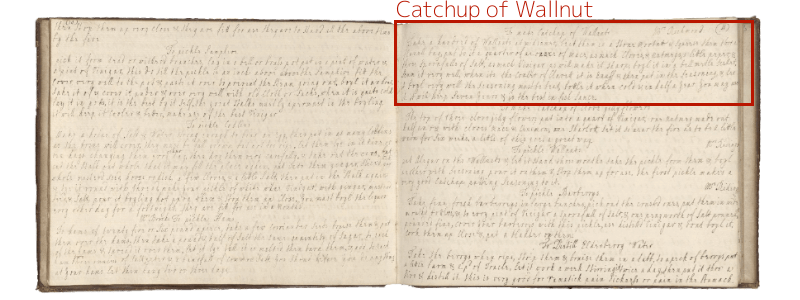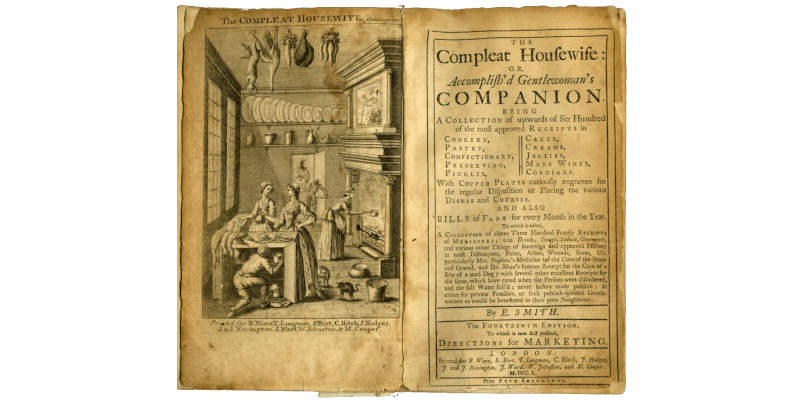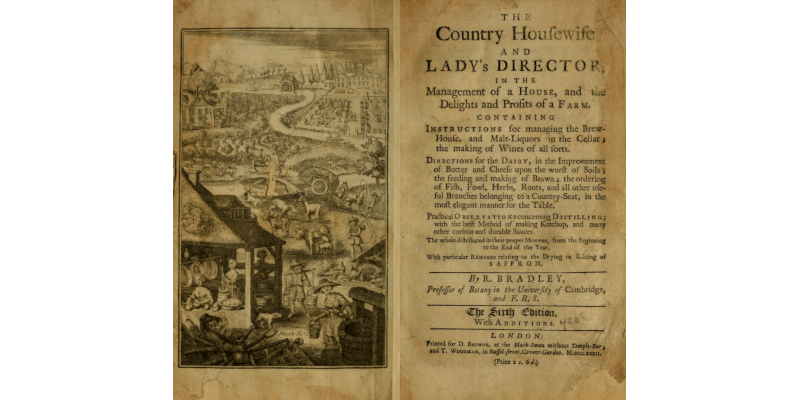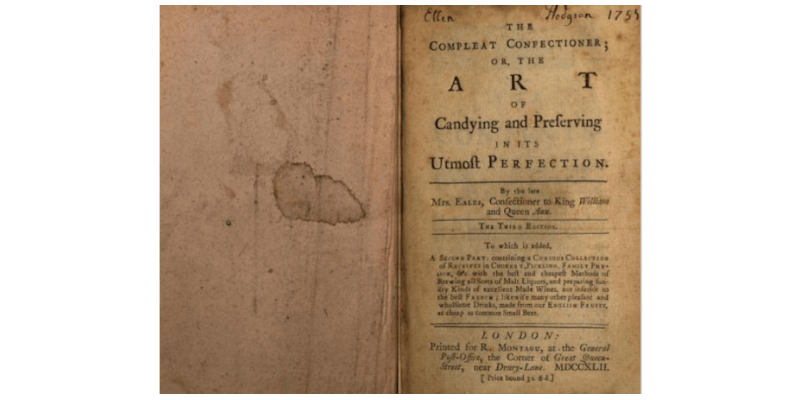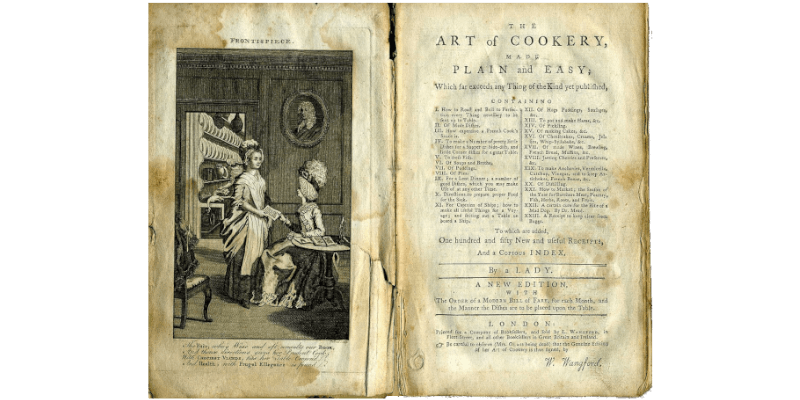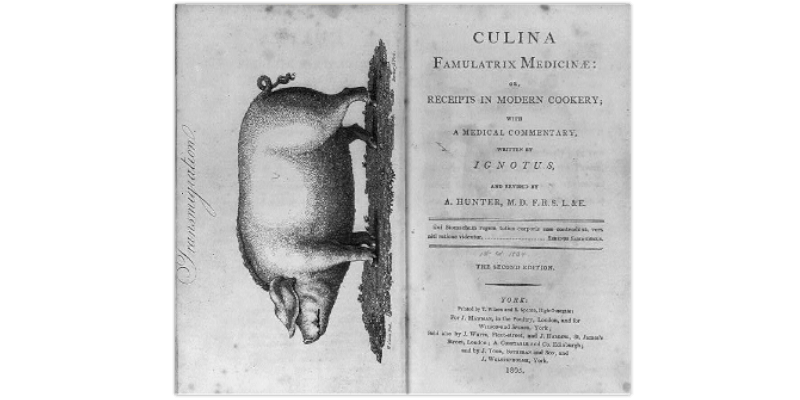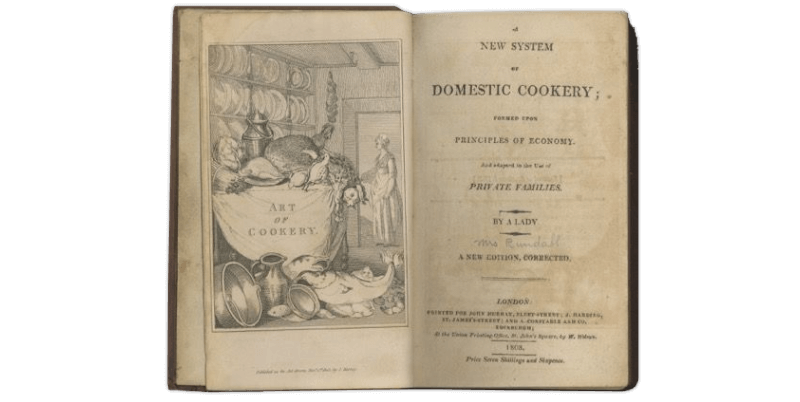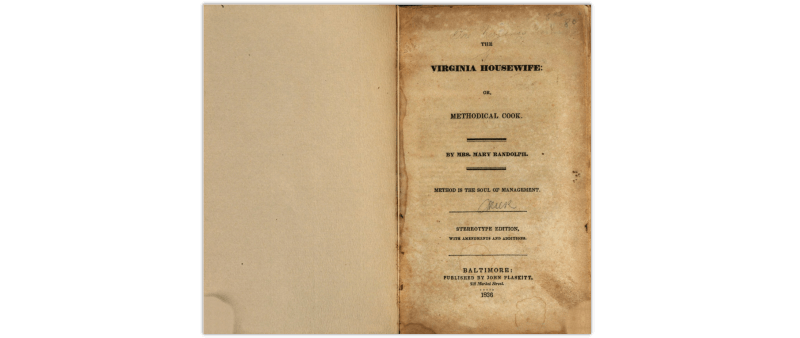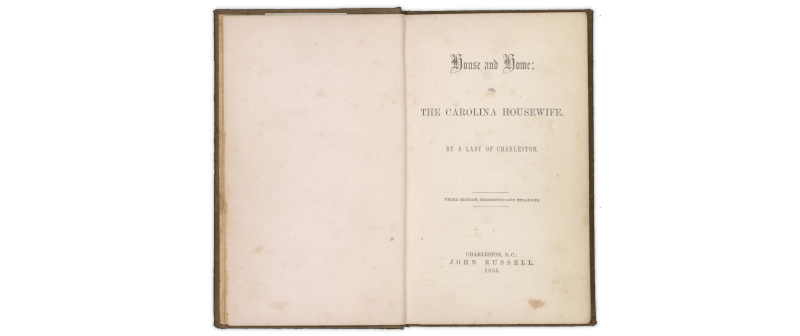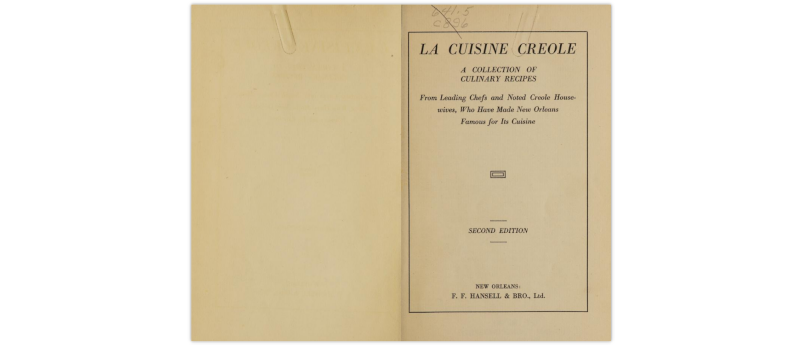Ketchup
What kind of seasoning is ketchup?
Tomato ketchup is the most popular seasoning that is sweeping the world probably. In fact, burgers, hot dogs and french fries are unthinkable dishes without tomato ketchup. It's such a familiar ketchup, surprisingly only few people know how it came to be on our table. This article would like to explain by shining a spotlight on such familiar seasoning ketchup.
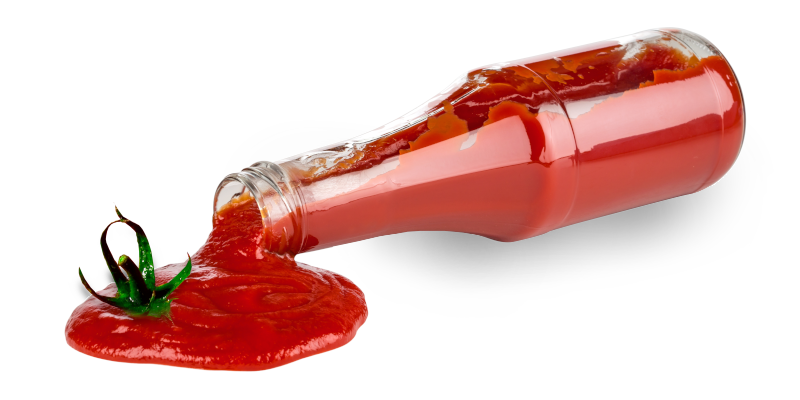
Journey of ketchup
The first thing to say is, "If you talk about the beginning of ketchup, you have to talk about soy sauce." Because ketchup was originally a soy sauce in the region of the East Indies. This soy sauce was not the soy bean sauce that is mainly used in Japan. The East Indies soy souce is the fish sauce(魚醤)made from fish. Fish sauce is a liquid seasoning made by fermenting salted fish and shellfish. These fish sauce is made in Vietnam and Thailand, called Nước mắm and Nam pla. In the past, these fish sauces were called ketchup.
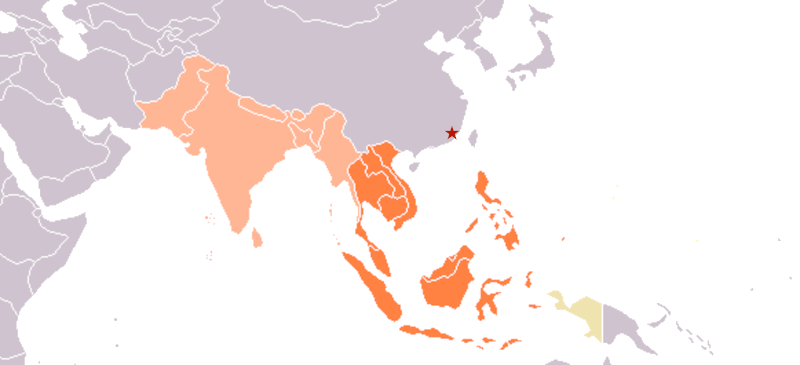
■ East India
■ India and Myanmar
■ Western New Guinea
★ Location of Fujian
During the Age of Discovery, ketchup was introduced to Europe by trade with the East Indies. What kind of area does the East Indies mean? First of all, this article defines in the above figure which area the land of East India is. At that time, the world's first joint-stock companies, "Dutch East India Company" and "British East India Company," were established and brought a lot of wealth to Europe through trade with Asia. The Netherlands traded in Java, and the United Kingdom traded mainly in India. As the range of activities shows, the dark orange and light orange areas are broadly the entire territory of the East Indies.
In a narrow sense, the East Indies corresponds to the present Indonesia, However, in a broader sense, India and its surrounding areas are also included in the territory of the East Indies. The name the East Indies was due to the fact that the Americas was initially mistaken for India during the Age of Discovery, after which the Americas refer to the West Indies and India and Southeast Asia as the East Indies to distinguish them. This is the origin of the name the East Indies.
As both the Netherlands and the United Kingdom were based in East Indies and expanded trade, they discovered ketchup that was distributed in this region and convey it to Europe as a product. Eventually, ketchup was traded at a high price as a rare source, and then in England, it began to imitate imported ketchup and made it in its own country. From here, ketchup gradually changes to something different from the original fish sauce. In the 19th century, tomato ketchup was born, and when this tomato ketchup was mass-produced in the United States, it spread all over the world. Thus, nowadays, ketchup has become so widespread that many people think that it is tomato ketchup.
Origin of ketchup
It was ketchup (fish sauce) found in the East Indies and introduced to Europe, However, its origin was in southern China. This episode about fish sauce is recorded in Qimin Yaoshu(齊民要術)written in the 6th century.
Qimin Yaoshu
昔漢武帝逐夷至於海濱,聞有香氣而不見物。令人推求,乃是漁父造魚腸於坑中,以至土覆之,香氣上達。取而食之,以為滋味。逐夷得此物,因名之,蓋魚腸醬也
【 Translation 】
A long time ago, when the Han Wudi defite the barbarians to the beach, he felt a scent, but could not find the source. Whenhe asked a person to investigate, He found that the fisherman was pickling the intestines of the fish in the hole. Even if it covered the soil, the fragrance went up and it was delicious when he took it and ate it. Therefore, this from the barbarians was named the fish intestines source (魚腸醬) .
Baiyue or the Vietnamese people once lived in the south of China (the area from the Yangtze River to the south to northern Vietnam). During the Han dynasty, there were two countries in southern China, Nanyue and Minyue. Nanyue was in the area of present-day Guangdong, Guangdong, and Vietnam, and Minyue was in the area around Min Jiang in Fujian Province, China. The Han Chinese, who were in the center of China, regard other peoples living in remote areas as barbarians, and often conquered them. The Han Wudi also proceeded to conquer, and by placing the southern part in the controlled area, the fusion of the Han and the indigenous people progressed. However, the people who did not obey Han were driven further south.
From the description of Qimin Yaoshu (齊民要術), it can be said that fish sauce was already made in this area during the Han dynasty. The emperor of Han conquered Nanyue in 111 BC, this episode about fish sauce is an event at that time. It mean, fish sauce was already made in southern China at this time, and the conquest of the Han Chinese forced the southern peoples further south, so these eating habits went further south, and eventually fish sauce has taken root. This food culture has spread throughout Southeast Asia.
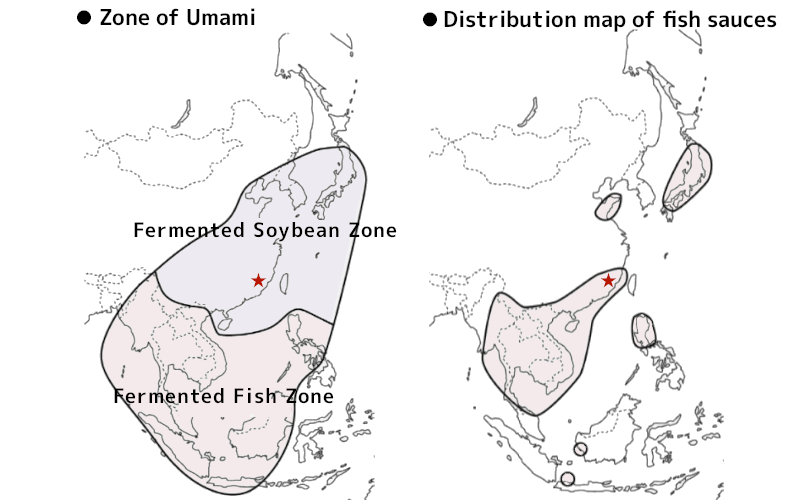
The magical power of fermented foods T.Koizumi and N.Ishige
★Location of Fujian
Naomichi Ishige, an anthropologist, classifies the predominant areas of grain sauce and fish sauce in Asia as shown in the upper left figure (● Zone of Umami). It can be seen that the north prefers soy sauce derived from grains such as soybeans, and the south prefers fish sauce derived from fish and shellfish. However, even in the predominant area of fish sauce, there is an area where fish sauce is made as shown in the upper right figure (● Distribution map of fish sauces), and Japan is also included in that area. In Japan, there are Shottsuru, Ishiru, and Ikanago soy sauce, and not only soybean soy sauce but also fish sauce culture exists firmly in various regions.
In China, the distribution of fish sauce is also found in Fujian, Guangdong, Guangxi, and Hainan provinces in the south, and this distribution in southern China is directly linked to the fish sauce distribution area in Southeast Asia. These areas were exactly the areas that were once conquered by the emperor of Han, called Nanyue or Minyue, and have long been the place where fish sauce was made and eaten.
In Southern Min language, fish sauce is called "ke-chiap", which is the origin of ketchup. In the first place, "ke" means "preserved fish" in Southern Min, and it is called ketchup. It can be seen that was a word for fish sauce. Westerners who visited Asia during the Age of Discovery heard the sound pronounced ketchup and also spelled the letters "koe-chup","ke-tchup","ge-tchup" and "kue-chiap" in the alphabet.
Fujian and Southern Min language [mìn.nǎn]
Although why was Ketchup in Southern Min language so widespread throughout Southeast Asia? One of the reasons is probably that fish sauce has been made around Fujian province for a long time, as mentioned earlier by quoting Qimin Yaoshu(齊民要術). Since ancient times, fish sauce has been produced, distributed and consumed in this area, so it is thought that this had spread throughout Southeast Asia.
Another reason is the movement of Fujian people (diaspora). Quanzhou, Fujian Province, had one of the largest trading ports in the world at that time. Quanzhou in Fujian Province is the starting point of the Maritime Silk Road, and Marco Polo, who stayed here around 1290, described the situation at that time in The Travels of Marco Polo as follows.
The Travels of Marco Polo
When you have accomplished those five days' journey you arrive at the very great and noble city of ZAYTON(current Quanzhou), which is also subject to Fuju.
At this city you must know is the Haven of Zayton, frequented by all the ships of India, which bring thither spicery and all other kinds of costly wares. It is the port also that is frequented by all the merchants of Manzi, for hither is imported the most astonishing quantity of goods and of precious stones and pearls, and from this they are distributed all over Manzi. And I assure you that for one shipload of pepper that goes to Alexandria or elsewhere, destined for Christendom, there come a hundred such, aye and more too, to this haven of Zayton; for it is one of the two greatest havens in the world for commerce.
From this description, it can be understood that Quanzhou in Fujian Province was the largest port in the world and was a city where trade with Asian countries was active. In addition, shipbuilding is flourishing in this area, and it is said that Fujian immigrants moved to Asian countries and settled there. In Fujian Province, in addition to Quanzhou, there are big cities such as Zhangzhou and Xiamen, and Southern Min languag is spoken in this area. Southern Min languag is also called Fujian language in Southeast Asia, This is because the people of Fujian, who speak Min languag, have emigrated to Southeast Asia and have traditionally been active as overseas Chinese. Therefore, Min language remains in various parts of Southeast Asia, and Min language is incorporated into the local language.
China is a large country, and the character of the inhabitants varies greatly depending on the region. Fujian people (especially Southern Min people) have traditionally tended to go out to the outside world to engage in commerce, and are said to have a diligent personality who prefers adventure. In addition, they has high adaptability and are a commercial seller. Perhaps because of this personality, it is estimated that 31% of the total number of Overseas Chinese from Fujian who have emigrated to various parts of the world. The number is about 10.335 million, and it is said that it has spread to more than 160 countries and regions around the world, although the majority of destinations are Southeast Asia, especially Singapore, Indonesia, the Philippines, and Malaysia. This character of Fujian has been formed for a long time, and it is thought that this is the reason why the world's largest shipping trading city such as Quanzhou once existed.
As a result of the movement of Fujian people from the past, fish sauces have also been produced in various parts of Southeast Asia, and at the same time, such fish sauces have been distributed in various parts of the country. In Indonesia, fish sauce is called "kechup ikan", which is also a result of the establishment of the word derived from the Southern Min languag of Fujian.
During the Age of Discovery, fish sauces already existed in Southeast Asian countries, and Asian people called it by various names. However, since the Fujian people who settled in various parts of Southeast Asia called it ketchup, it seems that the name ketchup was established as an offical word in the East Indies. Europeans during the Age of Discovery touched on these words and were probably taught at the time of the transaction that the sauce made from fish, that is, fish sauce name was ketchup.
Ketchup and Tea
The same phenomenon can be found in the name of tea. Tea is called "tea" or "te" in the West, however, it is also called "cha" in the northern part of Asia and "chai" in other Asian regions. Interestingly, although China is mainly a country called "cha", only the Fujian language of Fujian Province, which is a part of oolong tea producing area, calls tea "te".
In the past, Europe could only be obtained by importing tea from Asia, however, instead of the common name "Cha" in China, the Fujian word "Tea", which is used only in limited areas, was transmitted.
It should be considered that these are similar cases to the fact that the Ketchup in the Fujian language was recognized and transmitted to Europeans while fish sauces of various names existed in Southeast Asia.
The possible reason is that both tea and fish sauce were derived from Fujian. Quanzhou in Fujian, which has a huge trading port, was closely connected to the whole of Asia and had a great influence on the naming of products in business. Another reason is that many immigrants from Fujian settled in various parts of Asia to expand their trading business, and when they came into contact with Europeans, the names derived from Fujian (tea and ketchup) were transmitted to Europe.
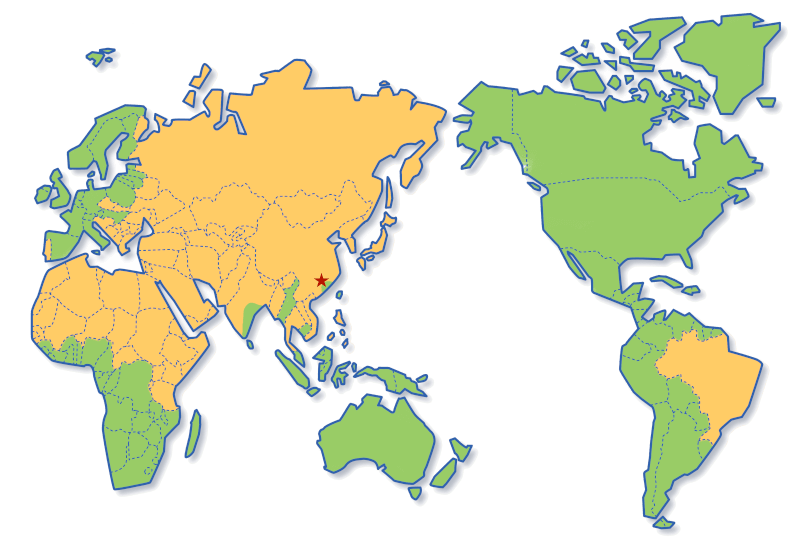
World tea name map
■ Tea,Te area
■ Cha,Chai area
★ Location of Fujian
The figure above shows how tea is called in the world. In China, called "tea" is limited to the Fujian area. And the East Indies (Indonesia) area is also tea. It should be considered that this is because the tea production area is Fujian, and because the tea of Fujian was distributed throughout East India by trade, it came to be called tea. Since both the Netherlands and the UK were trade with Asia, mainly in the East Indies, it is probable that tea came to be called tea instead of cha.
The difference in how tea and cha are called also depends on the route by which tea was delivered. The countries where tea was transmitted by land trade via the Silk Road are areas called "cha or chai". This includes inland Asia, Eastern Europe, and even North Africa. On the other hand, the areas where tea was introduced by sea during the Age of Discovery are called "tea or te".
Interestingly, in Europe, only Portugal calls tea is chá. Because Portugal set up a base in Macau, China before the Netherlands and the United Kingdom and started trading, the word chá came in first because it was called chá in Macau. Brazil in South America was a Portuguese colony and a Portuguese-speaking country, so tea is called "chá".
Benefits of importing ketchup
Looking at tea, which was a major import product during the Age of Discovery, also ketchup (fish sauce) was also an important item for trade. Tea and spices, which were the main import products of the trade, these dry products could be carried easily, however, other foods were very difficult to carry due to storage problems due to the voyage that passes directly below the equator. However, since ketchup was a fermented food with a salty taste, it could be transported to Europe without spoilage. The durability of these ketchups have been a major reason why fish source has been bought as imports, and it was reported that selling these ketchups in their home countries could have made a lot of profits for traders.
Charles Lockyer, who once worked as a trader in the countries of the East Indies, published his memoir An Account of the Trade in India in 1711. He mentions as following.
Account of the Trade in India P128~P129
Soy comes in Tubs from Jappan and the best Ketchup from Tonqeen; yet good of both forts, are made and sold very cheap in China. Buy none but what is right, which you are likelier to meet with among the Merchants than Shop-keepers. The best way is to agree by the Catty; for the Tubs are seldom or never full; But if they will not hearken to it, try which are heaviest, and refuse all that are not likely to contain the Quantity they ought; draw it off immediately, and secure it in bottles: Therefore in your passage thither save as many as you can; for I know not a more profitable commodity.
He advises that if you buy ketchup at a low price and refill it in a bottle and sell it, you can make a big profit. It also mentions Japanese soy sauce, and also states that Ketchup from Tonkin (Vietnam: Hanoi) is of the highest quality. This is because ketchup was fish sauce, so ketchup was more suitable for British tastes than soy sauce. Later, various ketchups and other sauces using anchovies were made in England. Given that most of these seasonings contained anchovies, it is speculated that the British have this kind of taste preference.
Ketchup and soy sauce were sold cheaply in Asia, however, merchants sold them as high-priced products by refilling them in bottles. The photo above is a bottle in the Victoria & Albert Museum in London with the words "KETCHUP" on it. This bottle is believed to date from 1790-1800, however, ketchup would have been sold in these bottles and placed on the table. This bottle seems to be expensive, therefore ketchup was an expensive and valuable sauce too. From the fact that Charles Lockyer stated that "there is no such profitable product", it is clear how high the price of ketchup was in the UK.
Ketchup was an expensive and valuable source in this way, it was soon possible to make ketchup that imitated Asian imports even in the United Kingdom. As a result, various types of ketchup will be born in England. From following section, how ketchup has been changed by referring to the cookbooks written in England at that time.
Ketchup made of the UK
From here, This article will explain how ketchup was inspired from the East Indies, then imitated in the UK, and how the recipe changed over time. By reviewing the process of this change, we can see how the current tomato ketchup was born.For that It is nessesary first check what the past British ketchup was like. An effective way to confirm these changes is to unravel the cookbooks published in England at that time. By showing what the ketchup recipes recorded in those books look like, it must be possible to clarify the taste of ketchup at that time.
1693-1694 Receipt book of Jane Staveley
One of the oldest ketchup recipes written in England is "Mrs. Marshall's White Ketchup" in the Receipt book of Jane Staveley, written by a woman named Jane Staveley in 1693-1694. It was not printed, however, it was left in a manuscript and the recipe is described as follows:
Receipt book of Jane Staveley
To make White Catchup of Mrs. Marshall
Take a pound of Anchovies, boil them in a quart of the best vinegar very gently for a quarter of an hour and then shain them through a fine sieve. Peel a pound of shallots and boil them in a quart of Madira, with a quarter of an Ounce of Mace, a quarter of an Ounce of whole white pepper & put them to the Vinegar the Anchovies mere boiled in. Set it stand all night, then boild the it with the shallots & spices.
This ketchup is made by adding shallot, anchovies and spices, which is very different from the tomato ketchup. The reason for this is that the ketchup produced in the United Kingdom is derived from the ketchup (fish sauce) imported from the East Indies.
The use of anchovies in British ketchup may a remnant of the fact that ketchup from the East Indies one was a fish sauce. A few more spices are included because spices are abundantly available in India and other Asian countries during the Age of Discovery. These spices have been imported to England, and they must have tried to reproduce the real taste of the area by using abundant spices. In other words, what the taste of this sauce was aimed how it close the taste to India and Asia. Therefore initially British ketchup was imitated Southeast Asian ketchup (fish sauce). The main reason for this imitation seems to be that the sources imported from India and Asia were very expensive. Therefore, it was very advanced that Jane Stevely wrote down a recipe for ketchup that made full use of spices as early as the latter half of the 17th century.
The book also contains a recipe for oyster ketchup. This is the recipe described as the first oyster ketchup. In this way, various types of ketchup were becomeing made in England.
1720 The Cookbook
The Cookbook of unknown author, written in 1720, contains another ketchup recipe. It is called "Richmond-san's walnut ketchup" and the method of making it is as follows.
The Cookbook
To make Catchup of Wallnut Mrs. Richmond
Take a hundred of Wallnuts as midsummer, beat them in a stone morter squeese them thro a flanell bag, put to it a quarter of an ounce of mace, as much cloves, & Nutmege, a little peper, & three Spoonfulls of salt, as much Vinigar as will make it sharp, boyl it in a bell metle scellet, scum it very well, when its the couler of clarett it is enuff & them put in the seasoning & them put in it boyl very well. the seasoning must be beat, bottle it when cold in half a year you may need it. it will keep seven years & it the best in fish sauce.
The feature of this recipe is that walnuts are used. Eventually, many British ketchups became to use walnuts. Therefore, the recipe for this walnut ketchup, which was first written, is very important.
1727 The Compleat Housewife, or, Accomplish'd Gentlewoman's Companion is a cookery book
Ketchup recipes first appeared in print books in The Compleat Housewife, or, Accomplish'd Gentlewoman's Companion is a cookery book, published in London in 1727 by Eliza Smith. The book has been very well received good reputation and sold well, making it a long-selling book that has been published 18 times in 50 years. This book is considered to be an important book in the history of cooking, in the sense that it was the first popular cookbook to be published.
It can be read from the book that the author, Eliza Smith, was a woman who spent her life working as a cook or housekeeper in a wealthy family. This can be understood because the first published ketchup recipe was written by a female chef at home, not a chef at a fine restaurant or a celebrity chef. Eliza Smith wrote the following recipe as "How to make British ketchup".
The Compleat Housewife, or, Accomplish'd Gentlewoman's Companion is a cookery book
Take a wide-mouth’d bottle, put therein a pint of the best white-wine vinegar ; then put in ten or twelve cloves of eschalot peeled and just bruised ; then take a pint of the best Langoon white-wine [a French white wine], boil it a little, and put to it twelve or fourteen [salted] anchovies wash’d and shred, and dissolve them in the wine, and when cold put them in the bottle ; then take a quarter of a pint more of white-wine, and put in it mace, ginger sliced, a few cloves, a spoonful of whole pepper just bruised, let them boil all a little ; when near cold, slice in almost a whole nutmeg, and some lemon-peel, and likewise put in two or three spoonfuls of horse-radish ; then stop it close, and for a week shake it once or twice a day ; then use it: it is good to put into fish sauce, or any savoury dish of meat ; you may add to it the clear liquor that comes from mushrooms.
It can be seen that the ketchup made in England was boiled with spices and flavored vegetables based on vinegar.Anchovies have also been added, however, this must have been conscious of ketchup imported from East Asia.The original fish source is accompanied by something like acidity due to fermentation, however, this ketchup recipe does not ferment, and the taste is reproduced with wine vinegar and wine acid.There were fermented foods like cheese in Europe, however, there are not many foods that ferment fish. If you dare to mention it, there are Surströmming in Sweden and Hakarl in Iceland, however, these have a strong character for some lovers and are not for common.On the other hand, many of the fermented foods in the Orient are closely rooted in daily life, and since the Orient has a long history and high technology regarding fermented foods, has an advantage more than Western.
Originally, fish sauce is made by soaking it for several years and fermenting it, however, it can be said that this recipe is a method of shortening the time to make ketchup. In that sense, it should be considered that vinegar is added to ketchup in England. This is the use of vinegar that reminds the difference between ripe sushi(熟れ鮓) and common sushi(握り寿司) in Japan.
The usage is written that "Add to fish sauce". This fish sauce here is a sauce made in Europe based on wine and vinegar. In modern times, Fish source is a word that refers to mainly oriental fish sauce(魚醤), however adding ketchup (fish sauce) to fish sauce is a strange, therefor, this is to add ketchup to the western fish sauce. Ketchup and fish sauce are similar, however ketchup contains spices, it was possible to give it a unique flavor, so this usage may have been effective. Also, at that time, ketchup imported from the East Indies was expensive, so it may have been used in a way that would add with fish sauce.
1727 The country housewife and lady's director, in the management of a house, and the delights and profits of a farm
In 1727, the same year as Elsa Smith, Richard Bradley, botanist and professor at Cambridge University, wrote The country housewife and lady's director, in the management of a house, and the delights and profits of a farm. In his book, describes how to make mushroom ketchup.
Richard Bradley (1688 – 1732) was a brilliant man who was elected a Fellow of the Royal Society at the age of 24. Bradley is the author of 24 books, with papers on botany as well as weather, fertilisers, productivity and plant hybridisation. He has also planted and improved gardens, studied infectious diseases, theorised on agricultural productivity and even written on cooking. Richard Bradley was also the first person to write a recipe in English for cooking with pineapple, so he certainly knew a lot about cooking as well as botany. Richard Bradley's recipe for Mushroom Ketchup, published in 1727, is as follows
The Compleat Housewife, or, Accomplish'd Gentlewoman's Companion is a cookery book
To make Mushroom Ketchup.
Take the Gills of large Mushrooms, such as are spread quite open, put them into a Skellet of Bell-Metal, or a Vessel of Earthen-Ware glazed, and set them over a gentle Fire till they begin to change into Water; and then frequently stirring them till there is as much Liquor come out of them as can be expected, pressing them often with a Spoon against the side of the Vessel; then strain off the Liquor, and put to every Quart of it about eighty Cloves, if they are fresh and good, or half as many more, if they are dry, or have been kept a long time, and about a Drachm of Mace: add to this about a Pint of strong red Port Wine that has not been adulterated, and boil them all together till you judge that every Quart has lost about a fourth Part or half a Pint; then pass it thro' a Sieve, and let it stand to cool, and when it is quite cold, bottle it up in dry Bottles of Pints or Half-Pints, and cork them close.
Ketchup made from mushrooms became the mainstay of British ketchup in the following years. At one time, ketchup in Britain was as much about mushroom ketchup as modern people think of tomato ketchup. Mushroom ketchup has continued to be made and can still be tasted in the UK today as it is produced and sold by several companies including Geo Watkins .

Geo Watkins:Mushroom ketchup
Incidentally, this recipe, written by Richard Bradley in 1727, mentioned other ways in which this ketchup can be enjoyed. It can be used as a substitute for gravy, and it can also be used with any good fish or meat that you come across when travelling around Britain or Europe. Mushroom ketchup must have been a rarity at this time, and would have been well received by enterprising people who enjoyed dining on the latest condiments.
Also, there is no salt in this mushroom ketchup. Richard Bradley suggests that salt and anchovies can be used in combination. As mentioned earlier, anchovies are always used in British sauce recipes. Although this recipe does not contain anchovies, the fact that he suggests using them in combination with anchovies suggests that the taste of anchovies is essential to the English.
This method of adding anchovies seems to have been carried over to the Lee & Perrins Worcestershire sauces that were sold 100 years later. And this Worcestershire sauces still contain anchovies today. This constant use of anchovies indicates that the British taste for sauces is closely related to the fish sauces found in East Asia, and that attempts have been made to emulate this. The use of ketchup combining acid and anchovies, and the fact that Fish and Chips , the national dish of the British people, are eaten with a lot of malt vinegar, suggest that the British have a strong preference taste for fish flavor and acid, in contrast to the image of Westerners as meat eaters.
Another recipe
In the same book, Richard Bradley gives another recipe for ketchup which come from the East Indies.
The Compleat Housewife, or, Accomplish'd Gentlewoman's Companion is a cookery book
Ketchup, in Paste. From Bencoulin in the East-Indies.
There is a Kidney-Bean, we have here, which has a fine relish in it, as the Indians say, but in fact there is none but what they give it by Art. This Bean, when it is full ripe, is taken out of the Shells, and boiled to a Pulp, and that Pulp strain'd till it becomes like Butter; then they put some of all the Spices into it, in Powder, as, Nutmeg, Cloves, Mace, and Pepper, Garlick, and Orange-Juice, or some Mango Pickle. This being well mix'd together, makes an agreeable Sauce, when it is put in any warm Liquor.
Bradley introduced a ketchup made from a paste of kidney beans. The kidney bean is from South American origin which became popular in England in the late 17th century, and was probably a substitute for the soya bean, which at that time was not yet grown in Europe. Of course, it is unlikely that kidney beans were still available in East India at this time, so the ingredients cannot be said to have been a realistic East Indian recipe. It is likely that soybeans would have been used in the original recipe.
Nevertheless, what is remarkable about this recipe is that it claims to have come from the East Indies city of Bengkulu. Bengkulu (an old English and Dutch name) was a British settlement on the island of Sumatra, founded in 1684, and is now known as Bengkulu. The British based themselves here because of the spice trade, and the fact that these ketchup recipes came from here confirms that the British encountered many different types of ketchup there and brought them back. The abundance of spices in this recipe also suggests that it originated in the East Indies.
However, this recipe was not widely used in Britain. This was probably due to the use of kidney beans, a special ingredient, and the fact that the recipe did not use salt, which made it difficult to preserve.
1742 The compleat confectioner: or, the art of candying and preserving in its utmost perfection
From the middle of the 18th century, mushrooms in particular came to be used in ketchup. In the third edition of the cookery book The compleat confectioner: or, the art of candying and preserving in its utmost perfection, written by Mary Eales in 1742 and published in London, the second part, "2nd part: containing A curious collection of receipts in cookery, pickling, family physick" shows how to make two kinds of ketchup.
One of them is "How to make ketchup that lasts for 20 years", and the recipe is written as follows.
The compleat confectioner: or, the art of candying and preserving in its utmost perfection; 2nd part:P22
To make Katch-up that will keep good twenty years.
Take a Gallon of Strong stale Beer, one Pound of Anchovies wash'd and clean'd from the Guts, half an Ounce of Mace, half an Ounce of Cloves, a quarter of an Ounce of Pepper, three large Races of Ginger, one Pound of Eschallots, and one Quart of slap Mushrooms well rubb'd and pick'd; boil all these over a slow Fire till it is half wasted, and strain it thro' a Flannel Bag; let it stand still it is quite cold, then bottle and stop it very close. This is thought to exceed what is brought from India, and must be allow'd to be the most agreable Relish that can be give both Taste and Colour beyond any other Ingredients.
It is characteristic that this recipe uses the same amount of mushrooms as anchovies as the main ingredient. Mushrooms were not the main ingredient in ketchup before 1742, however, they soon became the main ingredient, and in the 100 years between 1750 and 1850, ketchup made from pureed mushrooms with melted butter and walnuts became the standard in England.
1747 The Art of Cookery Made Plain and Easy
A recipe for ketchup was also included in The Art of Cookery Made Plain and Easy, published by Hannah Glasse in 1747. This book was first published in 1747 and has gone through many editions, apparently reaching 40. It is regarded as one of the most important English cookery books of the 18th century and is an excellent introduction to the cuisine of the time.
The following seven ketchup recipes can be found in the version published in Edinburgh in 1762 and describe below.
(1) To make English Ketchup
(2) Ketchup of Mushrooms
(3) To make Ketchup. Mrs,Gale
(4) To make Ketchup that will keep twenty years. Mrs.Saunders
(5) A good Ketchup
(6) Walnut Ketchup
(7) Mr. Braund's Ketchup
The first recipe (1) To make English Ketchup is the same as "To make English Katchup" above, published in Eliza Smith's The Compleat Housewife, or, Accomplish'd Gentlewoman's Companion is a cookery book in 1727. At the time there was no copyright on the recipe and it was possible to quote it without stating the source. This fact shows that this recipe was perfect that Hannah Glass did not need to change.
(2) Ketchup of Mushrooms differs from the recipe for mushroom ketchup given earlier by Richard Bradley, a professor at Cambridge University, in his book The country housewife and lady's director, in the management of a house, and the delights and profits of a farm. Richard Bradley did not use salt in his mushroom ketchup, however, Hannah Glass used a handful of salt in a pan to cook the mushrooms. However, this ketchup does not contain anchovies, which are often used in other ketchup recipes.
(3) To make Ketchup. Mrs,Gale is a recipe for mushroom ketchup. The recipe states that the mushrooms and salt should be placed in alternating layers and left for nine days. At this stage, the water will have soaked up and the mixture will be in a fermented state.This is then cooked and made into a sauce. The anchovies are added here, which is made it a very British ketchup.
(4) To make Ketchup that will keep twenty years. Mrs.Saunders is exactly the same as "How to make Ketchup that will keep twenty years" in The compleat confectioner: or, the art of candying and preserving in its utmost perfection published in 1742. It is also a mushroom ketchup, and contains anchovies, therefore it is quite English in taste.
(5) A good Ketchup is a recipe for mushroom ketchup. The mushrooms and salt are put in a pan in layers and left to stand for 20 hours, then the liquid is squeezed out and the spices are added over the fire. In this recipe, ginger and shallots are added, however, no vinegar or anchovies, therefore, it is thought that the ketchup had a mild taste and was not very acidic.
(6) Walnut Ketchup. Hannah Glass's recipe has a higher salt content than the other walnut ketchups mentioned above. This is common in other ketchups and is probably due to the fact that the salt content is increased for preservation purposes. In this recipe, a handful of salt is added and anchovies are not added to this ketchup, probably because it is already very salty.
(7) Mr. Braund's Ketchup is made by boiling anchovies with spices and vinegar. The impression is that this ketchup is similar to Worcestershire sauce of later times.
Characteristics of British Ketchup in the 18th and 19th centuries
A review of the recipes in some of the cookery books of the period shows that there were three main ingredients in English ketchup. All of these were bottled and used for meat and fish dishes.
(1) Mushrooms
(2) Walnuts
(3) Anchovies
(1) Mushrooms
Mushrooms were the most common of these and are still made and sold today. In the beginning, mushrooms were simply boiled down and spices were added, however, in later recipes, the mushrooms were soaked in salt and left to ferment for a while before being used, and anchovies were added to increase the thickness and complexity of the flavour.
(2) Walnuts
Walnut ketchup was made by grinding walnuts and combining them with spices and vinegar. This walnut ketchup was also popular in England in the 18th and 19th centuries. British female writer Jane Austen (1775-1-1817) also liked the walnut ketchup.

Martha Lloyd's Household book
Her good friend Martha Lloyd lived with Jane Austen and her family in Chawton, Hampshire in the summer of 1809 and wrote down the Austen family recipe of walnut ketchup that she was taught. The following is the Austen family recipe as written down by Martha Lloyd.
Martha Lloyd's Household book
Walnut Ketchup
Take green walnuts and pound them to a paste. Then put to every hundred two quarts of vinegar with a handful of salt. Put it altogether in an earthen pan keeping it stirring for eight days. Then squeeze through a coarse cloth and put it into a well lined saucepan, when it begins to boil skim it as long as any scum, rinse, and add to it some cloves, mace, sliced ginger, sliced nutmeg, Jamaica peppercorns, little horse radish with a few shallots. Let this have one boil up, then pour it into an earthen pan, and after it is cold bottle it up dividing the ingredients equal into each bottle.
This Austen family recipe is a valuable source of information about the writer's personal life and the kind of ketchup that Jane Austen liked to eat. It is also very interesting as it provides evidence of the widespread eating habits of walnut ketchup in England at the time.
(3) Anchovies
Anchovies are a basic ingredient in all ketchups. There is no recipe for mixing mushrooms and walnuts to make ketchup, however, the combination of mushrooms with anchovies and walnuts with anchovies was common. The reason why anchovies were added to ketchup in this way is thought to be that ketchup was originally derived from fish sauces of the East Indies. In later times, anchovies were added to Worcestershire sauce, which also originated in Britain, because they suited British tastes, and became the standard condiment to replace ketchup. This is an indication of British taste preferences.
Interestingly, there are big differences in taste preferences between countries. For example, Japan is a culture of soup stock, and people like to eat the Umami of soup stock made from bonito and kelp. It can be said that the foundation of Japanese cuisine is based on this Umami, on which the dishes are made. In addition, in Korea, the use of hot peppers is the basis of the taste, and the spiciness is a factor in the taste. In France, there are many different types of sauces that are used for different dishes, however, the taste is based on a cultural foundation of using butter and milk. While modern French cuisine has become lighter in order to bring out the flavour of the ingredients, classical French cuisine reveals a more pronounced these French taste for flavour.
The French are disdainful of the fact that in England there is only one ready-made sauce, Worcestershire sauce, and that it is poured over every dish, meat or fish, in the same way. In the 17th and 18th centuries, ketchup was widely used in England, while in France it was not actively used. This difference may have been due to the French culture of preparing sauces for a wide variety of dishes, and their reluctance to approach food with a single, ready-made sauce. Alternatively, the fact that the East Indies trade was dominated by the Dutch and British during the Age of Discovery, and that ketchup (fish sauce) from the East Indies was not plentiful, may have contributed to the lack of widespread preference for these flavours.
In any case, the sauces favoured by the British tend to contain anchovies (fish flavoured), and the British preference for such flavours seems to be evident from the fact that mushroom ketchup and walnut ketchup were once the main condiments, and since their demise have been replaced by This is evident in the replacement of Worcestershire sauce (Lea & Perrins) with anchovies. This can be explained by the fact that the British like fish flavours such as anchovies and tend to prefer vinegar (sour) added to these flavours. This is the same kind of taste that Japanese people look for in Umami, and it is a value that is unique to each country.
This tendency to eat only to the taste of a single sauce is equally evident in modern America. A striking example of this is the significant proportion of the American diet that is dominated by the condiment tomato ketchup. Former US President Trump has been quoted as saying that he eats his steak with ketchup at diplomatic dinners. There is a wide range of opinions about this way of eating, and each country and food culture will have its own values and opinions. This is also the diversity of food culture.

Brillat-Savarin, the French gourmand and politician, once said
Physiologie du goût
The fate of a nation depends on the way that they eat.
La destinée des nations dépend de la manière dont elles se nourrissent.
Evolutionary biologist and ethologist Richard Dawkins states in The Selfish Gene that our genes require a vehicle called the body. Our bodies, like our ancestors, are sustained by the food we have eaten for centuries. In this sense, we owe a great deal of our ego, our genetic traits, etc., to the food eaten by the peoples of our countries.
In this light, Bria-Savarin's words that "the fate of a nation depends on the way that they eat." seem to have great significance. In other words, what is called national food is the food, the ingredients, and the cooking methods that each race genes have inevitably and unconsciously chosen. What we eat and how we eat it is, in fact, a profoundly important question that goes directly to the heart of our identity. Therefore, it is important to understand that the food served at diplomatic dinners has a great meaning and message. It is only a sauce, however it is a sauce.
British taste preferences
The UK is one of the most notorious countries for its bad food, however, it is possible that this country has its own particular taste values, and that foreigners (from other food cultures) who don't fit in with these values rate that British food is bad. This is because taste is a subjective thing.
A hypothesis could be made that the English taste is fish taste (anchovies etc.) combined with acidity (vinegar). In other words. If you don't share this taste, then you can't like British food in general. At the same time, however, this seems to be the basis for understanding where British tastes. It may well be that these British tastes were the driving force behind the continued importation of ketchup from the East Indies. It may also have been the driving force behind the later imitation of ketchup made with mushrooms and walnuts, with anchovies and vinegar.
And then there is the classic of British origin: Worcestershire sauce (Lee & Perrin's), rich in anchovies and vinegar, which soon became Britain's signature sauce. Perhaps the reason why this new Worcestershire sauce overtook the mushroom and walnut ketchup of its predecessors was that Worcestershire sauce was more in tune with British tastes.
In addition, the British like to serve Fish and Chips with malt vinegar drizzled over. Worcestershire sauce is certainly a versatile sauce in the UK, however, no one would ever eat it over Fish and Chips. It contains fish flavours (such as anchovies) and acidity (vinegar), however, Fish and Chips is a dish of fish itself, and people prefer to eat it with just a splash of malt vinegar rather than Worcestershire sauce.
British Ketchup
Originally a fish sauce, ketchup became popular in England, where it was replaced by a sauce based on mushrooms and walnuts. It is worth noting that anchovies were also added to it. Thus ketchup, which was firmly established in Britain between 1750 and 1850, underwent a new development. This was the appearance of tomato ketchup.
The tomato is originally from the Andean highlands of South America. Over time, it made its way to Mexico in North America, where it was cultivated as a food plant. It was not until 1521, when the Spaniard Hernán Cortés conquered Tenochtitlán (present-day Mexico City), that tomatoes were brought back to Spain, where they were cultivated for food. However, it was believed that tomatoes were poisonous, so they were not eaten very often, and it was not until the 18th century that they finally began to be eaten in earnest in Europe. And it wasn't until the 19th century that it was processed into tomato ketchup, so tomato ketchup is not a very old sauce.
To explain the early tomato ketchup, it is difficult to know where to draw the line between tomato sauce and tomato ketchup. This is because tomato ketchup was not yet common, and it is possible that tomato sauce and tomato ketchup were treated in the same way, although they were called by different names. Therefore, tomato sauce is included in the category of tomato ketchup, the history of tomato sauce can be seen in the literatures below.
1804 Culina Famulatrix Medicinae:Or, Receipts in Cookery
The first written recipe for tomato sauce was given by the physician Alexander Hunter (1729-1809) in his book Culina Famulatrix Medicinae:Or, Receipts in Cookery, published in 1804 in his home town of York, England. The recipe is given below.
Culina Famulatrix Medicinae:Or, Receipts in Cookery
Tomata Sauce
TAKE tomatas when perfectly ripe. Put them into an earth pot, and set them in an oven after the bread has been drawn. Let them continue there till they become perfectly soft; then seperate the skins from the pulp, and mix with it capsicum vinegar, a few cloves of garlic pounded, a little powder ginger, and salt to the taste. Put the mixture into small wide-mouthed bottles; cork them well, and keep them in a dry cool place. Some white vinegar, with Cayenne pepper, may be used in place of capsicum vineger.
Although it is called "tomato sauce", the recipe is made by heating tomatoes to a purée and adding vinegar and spices, reminding us of the taste of tomato ketchup. Why this is a tomato sauce and not a tomato ketchup, will be explained later.
Here it is also important to mention the author, Alexander Hunter. Alexander Hunter was awarded a doctorate in medicine in 1753. He was elected a Fellow of the Royal Society (FRS) in 1775. Alexander Hunter was an M.D. (Medical Doctor), Also he was a man of many talents and published books not only on medicine, as well as on forestry, rural economy, agriculture and many other subjects. Culina Famulatrix Medicinae:Or, Receipts in Cookery, in which the tomato sauce appears, is a book about food, first published in 1804, reprinted in 1805, 1806 and 1807, and re-titled Receipts in Modern Cookery in 1820.
1807 A new system of domestic cookery
Alexander Hunter's recipe for 'tomato sauce' was quoted to another book. It was one of the bestselling English cookery books of all time, A new system of domestic cookery, formed upon principles of economy and adapted to the use of private families. This cookbook was written by a woman called Maria Eliza Rundell (1745-1828) and included a recipe for tomato sauce.
However, there is no need to quote the recipe here. This is because it is almost identical to the recipe for tomato sauce devised by Alexander Hunter in 1804. Maria Eliza Rundell quotes Alexander Hunter's recipe almost verbatim in her book.
However, when searching for a reference to tomato sauce in the first edition of Maria Eliza Randell's book, published in 1806, there is no mention of it anywhere. In fact, the recipe seems to have appeared in the second edition of 1807, which unfortunately couldn't find it on the internet, however it is find on the 4th edition, published in 1809, the recipe for Tomata Sauce on page 116, please check here. The recipe is the same in both the 4th and 2nd editions, therefore, this tomato sauce recipe was cited three years after the publication of Alexander Hunter's book.
This cookery book by Maria Eliza Randell was reprinted in 67 editions between 1806 and 1846 and sold over half a million copies during her lifetime. The book was reprinted 15 times in the United States between 1807 and 1844, and went through several editions before finally reaching its 37th edition. Maria Eliza Randell's cookbook must therefore have had a major influence on British and American cooking. In any case, the fact that it was such a best-selling cookery book, with many reprints, means that the recipes in it must have become widely known both in Britain and America.
Interestingly, for both mushroom ketchup and tomato sauce, the same pattern is repeated, with recipes first published by academic scientists and then featured in practical cookbooks written by women, which then become huge bestsellers.
In the previous section on mushroom ketchup, a scholar called Richard Bradley was introduced. He is a Fellow of the Royal Society (FRS), which is an honour membership of the oldest scientific academy.
Alexander Hunter, who wrote the first recipe for tomato sauce, was also a Fellow of the Royal Society. Incidentally, the Fellows of the Royal Society include members who have carried out famous and influential research, such as Isaac Newton, Alan Turing and Stephen Hawking. From this everyone can understand that both Bradley and Hunter had very scientific and academic backgrounds as well.
In the case of mushroom ketchup, botanist Richard Bradley was the first to publish the recipe, then The Art of Cookery Made Plain and Easy, which featured the recipe for mushroom ketchup by a woman, Hannah Glass, is in its 40th edition.
In tomato sauce, Alexander Hunter, a doctor of medicine, was the first to publish the recipe, and Maria Eliza Randell, a woman, took it up in A new system of domestic cookery, which became a bestseller.
In any case, in the field of cookery, it was the academic scientists who were the first publish it, which was very British style at the time. It is also interesting to note that later, female authors took the recipes and wrote specific cookbooks on how to use them practically at home, which became huge bestsellers and attracted a great deal of public interest. It was against this background that the first recipe for tomato ketchup appeared in America.
American ketchup
The following is a brief history of how tomato ketchup came to be in America. In the past, England made a variety of ketchup, however, no recipe for ketchup using tomatoes existed until the 19th century. On the other hand of America, was ahead of Britain when it came to tomato ketchup, and many cookbooks record recipes for it. In America, recipes were already available by the end of the 18th century.
In the 19th century, tomato ketchup became a popular condiment and grew into a major food industry. Today, tomato ketchup is one of America's most popular condiments, and huge quantities of it are consumed in this country every year. In this sense, tomato ketchup is an integral part of the American food culture. The following is a history of tomato ketchup in America, based on what is left of the literature.
1795 Approval Recipes
The first mention of the recipe for tomato ketchup is in two handwritten records from 1795. An organization called the New York Historical Association owned these records, but the organization was renamed the Fenimore Art Museum in 2017, and they are now in the museum's collection. One of the recipes for tomato ketchup is from Mrs Michel's Approval Recipes. The recipe is as follows
【 Approval Recipes 】
Love-Apple Ketchup/Mrs Michel
Slice the Love Apples, and put them in Layers, a layer of salt and a Layer of Apples with some All-spice, Mace, and whole Pepper, in a large Stewpan, boil them till tender, then pulp them through a sieve, let it stand to be cold, then add a quarter of a pint of Ketchup to each quart of Tomatum—Pound the rinds & seeds, and put them in the bottle -
This is thought to be the earliest recorded recipe for tomato ketchup. The tomato is called "Love-Apple", which is the French name for the tomato (French: Pomme d'Amour). There is also a French touch in the fact that the recipe is written by Mrs. Michelle.
1795 The Receipt Book of Sally Bella Dunlop
Another reference to a recipe for tomato ketchup is in the Receipt Book of Sally Bella Dunlop, also handwritten in 1795. The recipe is as follows
【 The housewife's recourse, containing a number of receipts for cooking, making wines, dyeing, and also some medical ones 】
Tomattoes Ketchup
Take your Tomatoes cut them and salt them—let them stand 48 hours, then strain them & boil away the liquor two thirds in a brass kettle, then to every gal-put 1 oz cloves, 1 oz mace 1/4 oz race ginger all to be made fine and boiled ten minutes in the liquor and when cold to every bottle add one pod of red pepper and escalots [and?] add some spirits to prevent mould.
The recipe is basically the same as the previous one, except that spirits (strong liquor) are added to prevent spoilage.
The Receipt Book of Sally Bella Dunlop, which contains the handwritten recipes, is 400 pages long and contains 335 recipes. It is thought that the writing of this document began in England in 1795 and continued in America. The recipe for tomato ketchup appears on page 72.
At least 23 of the recipes in the book were transcribed from other books. These include Eliza Smith's The Compleat Housewife, or, Accomplish'd Gentlewoman's Companion is a cookery book published in London in 1727, Hannah Glasse's The Art of Cookery Made Plain and Easy, published in England in 1747, and Mrs. Frazer's The practice of cookery, pastry, pickling, preserving, &c , published in England in 1791.
It is interesting to note that Sally Bella Dunlop, who wrote this recipe, was familiar with British cooking and continued to write recipes in America. It is not possible to exact date the recipe for tomato ketchup, but it is thought to have been written between 1795 and 1806, so it is probably the earliest known tomato ketchup recipe also.
As a side note, there is a website in California, USA, called the SOYINFO CENTER, which provides detailed research material on soy foods such as soy sauce and tofu, from the SOYINFO CENTER: History of Soy Sauce (160 CE to 2012). In this report, William Shurtleff & Akiko Aoyagi explain that the first mention of tomato ketchup is "by James Morton in 1800". However, there is no explanation of this source, and the original source has to be confirmed.
Incidentally, it is explained that the first mention of oyster ketchup, it is explained by Charlotte Mason in 1777. It is true that there is a reference to oyster ketchup in her book The Lady's Assistant for Regulating and Supplying Her Table. However previously mentioned Receipt book of Jane Staveley of 1693-1694, which was mentioned already about it nearly 100 years ago. Therefore this explanation is wrong.
Therefore, the explanation that "the first mention of tomato ketchup was by James Morton in 1800" is also questionable.
The two handwritten documents from around 1795 feature the French name for tomatoes, "Love-Apple", and the addition of spirit (strong liquor). These are elements that is also present in the tomato ketchup in the printed and published cookery books that follow, and is undoubtedly an important point.
1812 Archives of Useful Knowledge』Vol.Ⅱ
The first printed recipe for tomato ketchup appeared on Archives of Useful Knowledge』Vol.Ⅱ, published by James Mease (1771-1846) in Philadelphia, America in 1812. It contains the following recipe for tomato ketchup
Archives of Useful Knowledge, Vol.Ⅱ P306
TOMATOE, OR LOVE-APPLE CATSUP
SLICE the apples thin, and over every layer sprinkle a little salt; cover them, and let them lie twenty-four hours; then beat them well, and simmer them half in a bell-metal kettle; add mace and allspice. When cold, add two cloves of raw shallotts cut small, and half a gill of brandy to each bottle, which must be corked tight, and kept in a cool place.
This is the first recipe for tomato ketchup to appear in the published literature. The tomatoes are called "apples of love", which is an English reading of the French name for tomatoes (French: Pomme d'Amour), as mentioned above. This ketchup recipe does not contain vinegar, which is usually used, Although brandy instead. The vinegar was originally used for preservation purposes, although it was replaced by spirits. James Mease went to great lengths to specify the type of spirit as brandy. Brandy is a French liquor, and this recipe also shows the French influence.
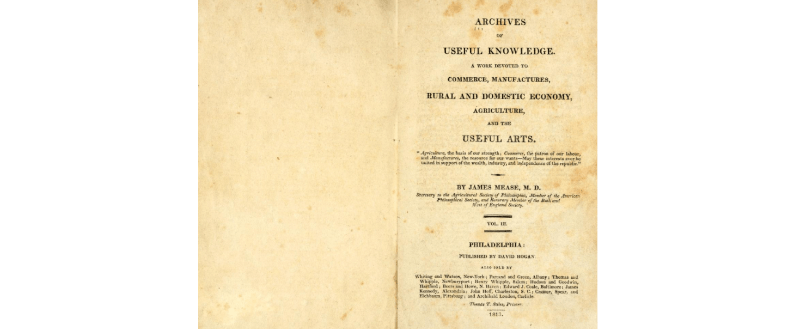
James Mease. (1812), Archives of Useful Knowledge
These elements (the French name for tomatoes, the addition of strong liquor such as brandy) were already present in the descriptions of the two tomato ketchups written by womens around 1795. James Mease have read both of these women's descriptions and used them as the basis for his tomato ketchup recipe? In reality, the preceding recipe for tomato ketchup is a handwritten document and would not have been easily accessible, so it is unlikely that James Mease read and wrote it down directly.
It would make more sense to assume that James Mease had heard of the way tomato ketchup was made, as it was commonly known at the time, and had written about it in his Archives of Useful Knowledge. This book is not a cookbook. Moreover, the Archives of Useful Knowledge is not a book which James Mease expresses his own original ideas, it is an encyclopaedia of techniques and knowledge in a variety of fields. Therefore, it should be assumed that such a recipe for tomato ketchup was known in America already.
Why, then, did the recipe for tomato ketchup, which is thought to have been widely popular in America, have such a French twist? James Mease, the author of this recipe, had also compiled an encyclopaedia, The Domestic Encyclopedia, eight years earlier in 1804. In the third volume of this encyclopaedia, there is a section on "Love apple: tomatoes", which contains the following interesting explanation.
The Domestic Encyclopedia, Vol.3 P 506
LOVE-APPLE or Solanum Lycopersicum, L. a native of the East and West Indies, whence it has been introduced into our gardens. The love-apple is greatly esteemed at table: it is either used in soups or broths, to which it imparts an agreeable taste; or it is boiled and served up as a garnish to dishes of animal food.
(The cultivation of this excellent vegitable is rapidly extendong in Pensilvenia, where a few years ago, it was a scarcely known.
the apples stewed make an excellent sauce for fish; and fine catsup, which is used to by the French in a variety of dishes.
James Mease' account suggests that tomatoes were already widely cultivated and consumed in Pennsylvania in 1804. It is also said to have become "a fine ketchup used by the French in various dishes", indicating that French ketchup existed in America at that time: Pennsylvania. The first printed recipe for tomato ketchup was published in 1812, however, the first printed mention of its existence was in this account, published in 1804.
Andrew.F.Smith, author of Pure Ketchup, states that "given the lack of evidence of French use of the term ketchup, Mease probably saw French immigrants, perhaps French refugees fleeing the Haitian revolution, or French Creole refugees, using such tomato sauces".
In fact, this recipe, as recorded by James Mease, does not contain any vinegar or anchovies. However, if it was to be an English ketchup, these elements would have been essential. The recipe for "tomato sauce" given earlier by the Englishmen Alexander Hunter and Maria Eliza Randell contains vinegar, no anchovies. To those of us who are familiar with modern tomato ketchup, this recipe would seem to qualify as tomato ketchup, although the reason it is called tomato sauce is that it does not contain anchovies, which would have made it less than ketchup in the sense of the time. In other words, in England, the line between calling it ketchup and not calling it ketchup was probably drawn by whether or not there were anchovies in it. To further clarify the difference, here is the first recorded recipe for tomato ketchup in Britain.
1817 The Cook's Oracle; and Housekeeper's Manual
The first recipe for tomato ketchup to appear in an English book was in 1817, in the first edition of The Cook's Oracle; and Housekeeper's Manual, by William Kitchiner (1775-1827). The recipe is as follows
The Cook's Oracle; and Housekeeper's Manual
Gather a gallon of fine, red, and full ripe tomatas ; mash them with one pound of salt; them rest for three days, press off the juice, andto each quart add a quarter of a pound of anchovies, two ounces of shallots, and an ounce of ground black pepper; boil up together for half hour, strain through a sieve, and put to it the following spices; a quarter of an ounce of mace, the same of allspice and ginger, half an ounce of nutmeg, a drachm of coriander seed, and half a achm of cochineal; pound all together; let them simmer gently for twenty minutes, and strain through a bag : when cold, bottle it, adding to each bottle a wineglass of brandy. It will keep for seven years.
It is worth noting that, as is often the case with British ketchup recipes, anchovies are included as an ingredient. This is because, as has been pointed out many times, ketchup is originally derived from fish sauce. However, this recipe does not contain vinegar, which is often used in British ketchup. This may be because the acidity of the tomatoes made it unnecessary to add vinegar, but it may also be due to the influence of earlier American ketchup recipes.
The reason for this is that the recipe of William Kitchener of London also has brandy added finally. This is the same method as that of James Mease of Philadelphia in the USA, which also gives the impression of being French. In fact, by this time, a new trend of flavours was emerging in the West Indies and America, different from the orthodox English ketchup (with mushrooms and walnuts). William Kitchener's recipe may have taken its inspiration from such American publications and added the British taste for fish (anchovies).
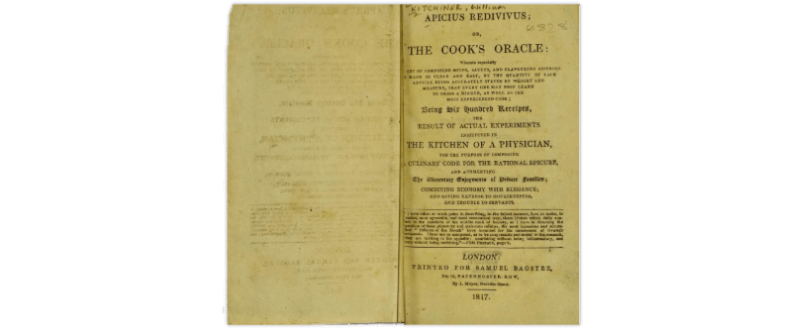
William Kitchener. (1817), The Cook's Oracle; and Housekeeper's Manual, first edition.
Tomatoes were a popular food in the Americas, however, were still an emerging vegetable in Europe, and when it came to making ketchup from them, the American food culture, where tomatoes had been used extensively, must have had an advantage more than the British sauce. This trend was no doubt furthered by the introduction of tomatoes to America by the French in the West Indies, and by the French colonists in their native lands. In this light, the influence of the Creole cuisine of the American South should be taken more into account in the expansion of tomato ketchup.
Creole cuisine
Creole cuisine is a fusion of several culinary cultures, especially in the area of New Orleans in the U.S. state of Louisiana. 17th century settlement of America and the West Indies led to an increase in the number of Europeans born and raised there. These people came to be known as Creoles, from the Spanish word "criollo". The French colony of Haiti, mentioned above, is also in the Creole zone because of its location in the Caribbean. Louisiana was also a French colony, thus Haiti and Louisiana in the West Indies were inhabited by many Europeans of French descent.
Louisiana was once the entire Mississippi basin, several times larger than its present extent, and was a French colony that had been given to Louis XIV in 1682. Louisiana itself was named after Louis XIV. However, in 1763, as a result of the war between England and France (the French and Indian War), the defeated French ceded the area west of the Mississippi River and New Orleans to Spain, and the area east of the river to England. Spain then returned the area west of the Mississippi to France, however, in 1803 Napoleon sold it to the United States, which eventually incorporated it into the United States, and French territory in America ceased to exist.
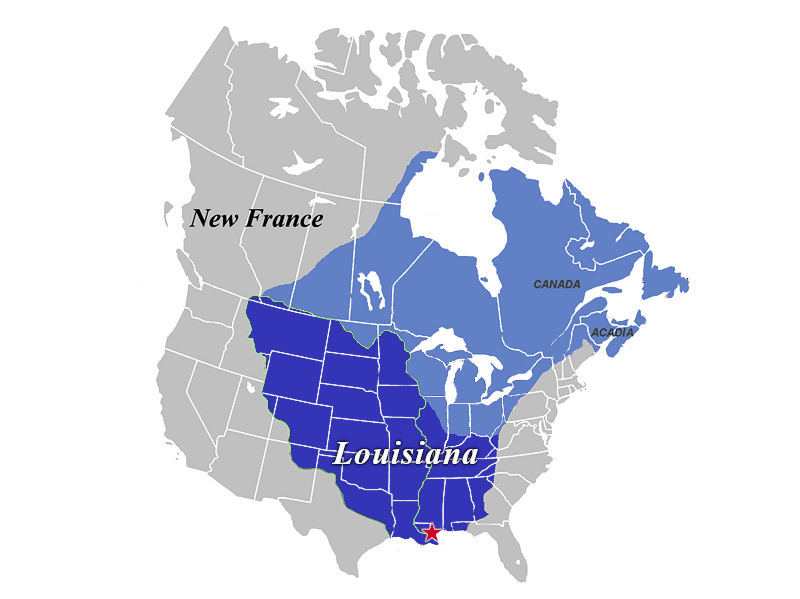
■French Louisiana
■Other French regions
★New Orleans
As can be seen from the figure above, France in the 17th and 18th centuries once had a vast territory in America.
For this reason, many Europeans of French and Spanish descent settled in the area around Louisiana (especially in the south of the USA, mainly in New Orleans), and these people, known as Creoles, created their own culinary culture, Creole cuisine.
Although the influence of Creole cuisine is not often mentioned in the discussion of tomato ketchup, the evolution of ketchup recipes has led to consider that there is a French colonial influence and that Creole cuisine may have had something to do with the birth of tomato ketchup. In the second part of this article, we will examine the relationship between Creole food and ketchup, the first of all, revealing how ketchup was treated in American cookbooks.
American women's ketchup recipes
In the 19th century, the use of tomatoes in cooking began to expand in America. This article will show how American women wrote recipes for tomato ketchup in their cookbooks. By uncovering these tomato ketchup recipes and their backgrounds, it is possible to shed light on the process of how tomato ketchup came to be as known it today.
1824 The Virginia Housewife
Mary Randolph, who lived in Virginia, published The Virginia Housewife in 1824. This is one of the most important and notable American cookery books of all time. Mary Randolph's recipe for Tomato Ketchup is as following.
The Virginia Housewife
Gather a peck of tomatas, pick out the stems, and wash them; put them in the fire without water, sprinkle on a few spoonsful of salt, let them boil steadily an hour, stirring them frequently, strain them through a colander, and then through a sieve; put the liquid on the fire with half a pint of chopped onions, a quarter of an ounce of mace broke into small pieces, and if not sufficiently salty, add a little more, one tablespoonful of whole black pepper, boil all together until just enough to fill two bottles; cork it tight.-- Make it in August.
This is a ketchup with no vinegar or anchovies. The absence of anchovies suggests that this is a style of ketchup unique to America, different from the ketchup traditionally made in Britain.
Additionally explaining more about Mary Randolph, who wrote this ketchup recipe. Mary Randolph's father, Thomas Mann Randolph Sr. was orphaned at an early age and was raised by his relatives, Thomas Jefferson's parents, and grew up in the same family as Thomas Jefferson. Thomas Jefferson became the third president of the United States, and because of this kinship, the Randolphs were an important family in Virginia politics.
The author Mary Randolph's father, Thomas Mann Randolph Sr. served as a member of the Virginia Senate and House of Delegates. Also her brother, Thomas Mann Randolph Jr. married Martha, daughter of Thomas Jefferson, and was a member of the House of Delegates and Governor of Virginia. From this it can be understood that the Randolphs were a political family of the American founding era.
In addition, Mary Randolph's mother's family was a descendant of Pocahontas (ca. 1595 - 1617). Pocahontas was the daughter of a Native American Pohatan chief who was featured in a Disney movie. Pocahontas became the wife of John Rolfe, a white man who founded a tobacco company in Virginia, and had one child, Mary Randolph, who is a descendant of Pocahontas.
Incidentally, the descendants of Pocahontas have become one of the most prominent families in the nation, dating back to the first settlers of Virginia. Other descendants include George Randolph, Major General Richard Byrd, First Lady Nancy Reagan, and Senator John McCain, who was running for president. The Bush family, which has produced a father and son presidents, also claims to be descended from Pocahontas, however in fact their ancestors are not directly descended from Pocahontas. The Bush family connect only from her second marriage partner or the woman's marriage partner, therefore they are not really direct descended from Pocahontas. In this way, being a descendant of Pocahontas seems to mean that you are related to many historical American politicians, and there is a sense that it has become a status as a political family.
It is an interesting fact that Mary Randolph was not just a cookbook author, because her family deeply involved in American politics. Also Mary Randolph's grandmother, Jane Bolling Randolph, completed the manuscript of the cookbook in 1743, and the manuscript was passed down to Jane Randolph Walk, Mary Randolph's aunt. The family had a history of recipes, and it may be thought that this background in cooking allowed Mary Randolph to write The Virginia Housewife cookbook.
This history is very important in terms of the establishment of culinary culture in America. This becomes clear when we refer to the quote by Bria-Savarin, "The fate of nations depends on the way they eat. This is because Virginia, a place in early America, there was a family that was deeply involved in politics, and this family had a following the family recipe. If we read "The Virginia Housewife" from this perspective, it is not only a cookbook, as well as a key to understanding how the United States of America came to be, and how the natives and other European cultures fused together. This book is not only a cookbook, but also a key to understanding how America was formed and how the natives and other European cultures merged.
Mary Randolph's Achievements
Karen Hess, a contemporary culinary historian, describes The Virginia Housewife, written by Mary Randolph, as "a break from English cooking habits and a breakthrough in tomato cooking for America".
Culinary historian Andrew F. Smith, in his 1994 book The Tomato in America: Early History, Culture, and Cookery, similarly noted that Mary Randolph's wide range of tomato recipes "set the standard for tomato cooking for the next thirty years".
José Andrés, a famous chef from Spain who became a naturalized citizen of the United States in 2013, was also inspired by Mary Randolph's recipe. His restaurant, America Eats Tavern, serves a gazpacho based on Mary Randolph's recipe, and he explains why the dish is served in his article What It Means to Cook American Food, he states that the reason why this dish is served is because it "forever reminds me of where I came from and where I belong now". He went on to say that "the recipe "attests to one of the earliest culinary influences that my native Spain had on this country. Nothing will ever define America like that book. It is not the first cookbook printed in the United States, but it is the first cookbook printed in the United States written by an American. Her gazpacho recipe shows how far back the concept of this country as a melting pot of cultures can be traced. Her gazpacho recipe shows how far back the concept of this country as a melting pot of cultures can be traced", he stated . In other words, it is a dish that is connected to his own Spanish identity, However, at the same time, it is a recipe that is related to the identity of how various cultures mixed in the U.S. to create the country of America
José Andrés's article is also mentioned in Richmond's Culinary History: Seeds of Change, in chapter 6, "Culinary Genius: Mary Randolph". The book also mentions that James Beard, the American chef and author of many cookery books, considered Mary Randolph to be a "culinary genius". James Beard has passed away, the James Beard Foundation continues to contribute to the development of food culture through its annual James Beard Foundation Awards, which honour chefs, restaurateurs, writers and journalists. Its founder, James Beard, was also a great admirer of Mary Randolph, who lived 200 years ago. Because she wrote 17 different recipes for tomatoes, even though it was still believed that tomatoes were poisonous.
In fact, "The Virginia Housewife" describes two kinds of tomato marmalade, tomato ketchup, tomato sauce, egg and tomato, and four Spanish dishes made with tomatoes, including gazpacho. This was a sign of Mary Randolph's willingness to use tomatoes in her cooking, and to incorporate the tomato, still an emerging vegetable, into American cuisine. Thomas Jefferson, the third President of the United States by marriage, was a pioneer tomato grower. Jefferson's daughter Martha (who married Mary Randall's brother), Virginia, and Septimia were among the first to grow tomatoes in 1809, when tomatoes were still frowned upon. They left behind many recipes for tomatoes, including gumbo soup, cayenne spiced tomato soup, green tomato pickles, tomato jam and tomato omelettes. It is quite natural to assume that these recipes were shared by the daughters of Mary Randall and Thomas Jefferson and that they were included in The Virginia Housewife.
The cultivation of tomatoes in America and the recipes that use them are closely associated with the American family, and it is likely that tomatoes have become a culinary and culinary ingredient that has shaped the identity of the emerging American nation. And tomato ketchup is perhaps the best example of this.
1839 The Kentucky Housewife
Lettice Pierce Bryan (1805-1877), a Kentucky woman, published a cookbook in 1839 called The Kentucky Housewife. In this book, there is also a recipe for tomato ketchup.
The Kentucky Housewife
Tomato Catchup
Gather your tomatoes when fine and ripe, peel them and crush them to pieces; put them in a stew-pan, without water, season them with salte, as for table use, and boil them gently for two hours, strring them frequently; then strain them through a seive, pressing them with a large spoon or ladle, to get as much of the juice as you can. Season it to your taste with pepper, mace, cinnamon, nutmegs and ginger; put it again in the pan, and simmer it till tolerably thinck, then cool it, put it in samll bottles, and cork them tightly, securing them with melted rosin. You may flaver it with onion, or salt and pepper only.
It is a simple recipe of tomatoes with salt and spices. This style of ketchup seems to have been established since Mary Randall. This recipe also has neither the English fish taste (anchovies) nor the strong acidity (vinegar), suggesting that this style of tomato ketchup was well established.
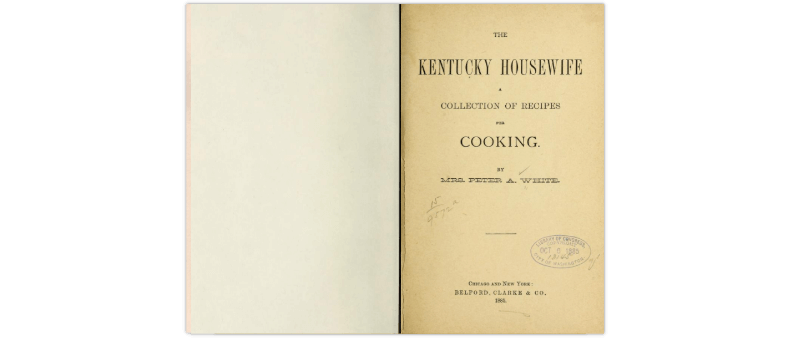
Lettice Pierce Bryan. (1839), The Kentucky Housewife
In fact, if the frequency of recipes in this cookbook where tomato ketchup is used is examined, it appears 24 times, including recipes for tomato ketchup itself. Not only that, however, tomatoes also appear in tomato soups and tomato sauces, suggesting that tomatoes and tomato ketchup had become commonplace by this time.
1847 The Carolina housewife or, House and home
The next book is The Carolina housewife or, House and home, published by Sarah Rutledge (1782-1855) in 1847. This cookbook contains two different recipes for tomato ketchup. The first is entitled "TOMATO CATSUP. No.1" .
The Carolina housewife or, House and home
TOMATO CATSUP. No.1
Let your tomatoes be perfectly ripe; put them in a shallow tin pan; add salt, a few slices of onions, and some pods of red pepper, seasoning to your taste; stew on a slow fire until the juice is almost a jelly; then rub the mixture through a hair sieve; let it remain until the next day; then bottle it, adding a wine-glass of the best port wine to each quart of the mixture. The bottles must be sealed carefully. The tomatoes should be stewed without being peeled.
This recipe is also in the same style as Mary Randolph's tomato ketchup. It contains only tomatoes and spices and no vinegar. Although at the end, port wine is added, presumably to sterilise and preserve it, which seems to be a remnant of the old days.
The second ketchup recipe is as follows.
The Carolina housewife or, House and home
TOMATO CATSUP. No.2
Select the ripest tomatoes; scald and peel them; to one gallon tomatoes, add one quart of sharp vinegar; also, the following ingredients ground fine, viz: two table-spoonfuls of salt, one of black pepper, one of allspice, three of mustard, eight or ten pods of red pepper, one or two cloves of garlic (sliced). The whole is then put into a tin or copper kettle; simmer it over the fire three or four hours, stirring occasionally. It should then be rubbed through a sieve, fine enough to catch the seeds. Bottle it. If the simmering has not been sufficient, it will be known in a few days by the appearance of a white scum in the neck of the bottles, which can be corrected by simmering it an hour or two more, adding as much vinegar as will supply the previous loss by evaporation. The bottles should be sealed.
This is a recipe to make active use of more vinegar. Rather than using vinegar for taste, it should be interpreted as using vinegar for sterilisation and preservation.
In The Carolina housewife or, House and home, two types of tomato ketchup are mentioned, however, there are five recipes involving tomato ketchup, including the tomato ketchup itself, and a total of 26 recipes using tomatoes, confirming that tomatoes were becoming a common vegetable.
From the first to 3rd edition of this cookbook, the name of the author, Sarah Rutledge, was withheld and she was listed anonymously as "a Lady of Charleston". Charleston is a city in the US state of South Carolina, where Sarah Rutledge lived and wrote this cookbook.
Mary Randolph published The Virginia Housewife. Followed by this, Lettice Pearse Bryan published The Kentucky Housewife and Sarah Rutledge published The Carolina Housewife. It is noteworthy that these American women published cookbooks in a similar style and wrote many of their tomato recipes in them.
1885 La Cuisine Creole
The author of La Cuisine Creole, a cookery book published in 1885, was Patrick Lafcadio Hearn (1850-1904), then a newspaper reporter in New Orleans. Lafcadio Hearn later moved to Japan, where he became a naturalised Japanese citizen in 1896. His stories "Hoichi the Earless" and "The Snow Woman", published in 1904 as Koizumi Yakumo's Kwaidan, are familiar to Japanese people still.
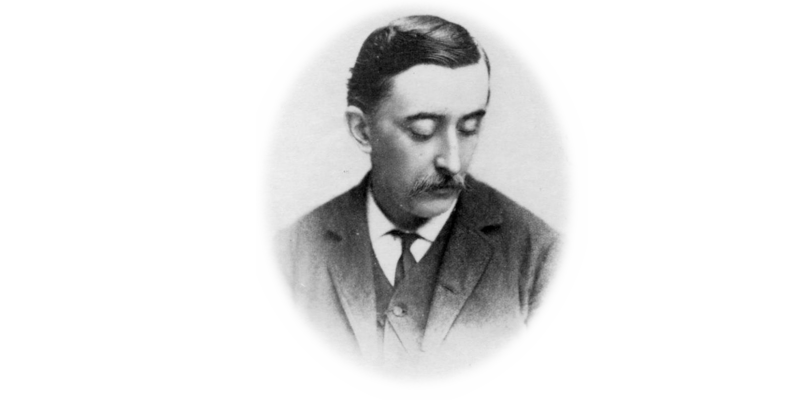
Lafcadio Hearn(Yakumo Koizumi:小泉八雲)
Lafcadio Hearn was a Greek-born Englishman who lived in Ireland, France, the United States, the West Indies and Japan. After university, he emigrated to the United States at the age of 19 to work as a newspaper reporter, first in Cincinnati and then in New Orleans. It was during his time in New Orleans that he wrote La Cuisine Creole. Later, Lafcadio Hearn spent two years as a correspondent in the French West Indies before settling in Japan, where he wrote many books on Japan and finished his life.
La Cuisine Creole, written by Lafcadio Hearn (Koizumi Yakumo), who was 35 years old at the time, contains the following recipe for tomato ketchup.
La Cuisine Creole
TOMATO CATCUP
Take enough ripe tomatoes to fill a jar, put them in a moderate oven, and bake them until they are thoroughly soft; then strain them through a coarse cloth or sieve, and to every pint of juice put a pint of vinegar, half an ounce of garlic sliced, a quarter of an ounce of salt, and the same of white pepper finely ground. Boil it for one hour, then rub it through a sieve, boil it again to the consistency of cream; when cold, bottle it, put a teaspoonful of sweet oil in each bottle; cork them tight, and keep in a dry place.
This is the recipe for tomato ketchup as it was then served in New Orleans. The subtitle of "La Cuisine Creole" is "A Collection of Culinary Recipes, From Leading Chefs and Noted Creole Housewives, Who Have Made New Orleans Famous for its Cuisine". This means these Creole recipes have been collected from famous chefs and notable housewives, then edited by Lafcadio Hearn. This is supported by the book Wandering Ghost: The Odyssey of Lafcadio Hearn by Jonathan Cott, published in 1998, which mentions on p164 that he was taught to cook by the wife of a Spanish Creole friend who became his friend.
The background to why Lafcadio Hearn wrote his cookbook is the World's Fair in New Orleans in 1884. The book was published and sold to coincide with the event. The book was so well received that it went through several editions. La Cuisine Creole contains valuable information about the cuisine of the Creole people of the time, Also it is valuable not only as an interesting cookbook, also it illustrates the character of New Orleans through its cuisine. It is interesting to note that the man who wrote such a cookery book in America also came to Japan later in life and depicted the country through his various writings, including Ghost Stories:Kwaidan.
Lafcadio Hearn (小泉八雲:Koizumi Yakumo) was a master at depicting the essence of a country or region, even through the subcultures of at the time, such as cooking and ghost stories.
In fact, if one checks the tomato ketchup recipe in La Cuisine Creole, it is clear that the tomato ketchup of New Orleans at this time was almost identical to the tomato ketchup of other parts of the United States. It is clear that the tomato ketchup eaten in New Orleans was a general recipe, rather than a Creole-influenced one that was unique in the United States. In other words, the tomato ketchup eaten in America at that time was no different from the tomato ketchup eaten in New Orleans.
It may seem mundane that tomato ketchup is no different in New Orleans than anywhere else in the United States, where Creole cuisine is one of America's most distinctive culinary traditions. On the contrary, however, It can be consider, the reason for this phenomenon lies in the fact that the tomato ketchup that spread in New Orleans and Louisiana spread throughout the United States. In other words, it was the tomato ketchup eaten by the Creoles that influenced and eventually became the standard throughout America
French influence
Originally a condiment from the Fujian province of China, or parts of South East Asia, ketchup became popular in Britain and was also made in England. The British produced ketchup with mushrooms, walnuts, oysters and lobster, and many of these recipes can be found in British cookery books. In France, however, ketchup was not used as heavily as in England, and the sauce was not used as often as in England. In France, however, ketchup was not used as much as in England, probably because the French culinary culture was to make a sauce for each dish and not to use the same sauce (ketchup or Worcestershire sauce) for all dishes.
In the 17th century, many immigrants from Europe moved to live in America. The early immigrants from England who settled on the East Coast were probably still under the influence of British food culture. This is because British cookery books were still being published in America and these books were selling well in print. However, when it came to tomato ketchup, the French-influenced recipes were preferred over the British-derived ones.
The French influence, of course, is not a French one. This is because ketchup was rarely consumed in France. The French influence here is a style of cooking "Creole" created by the French who moved to the West Indies, including the colonies of Haiti. In time, some of this Creole influence spread to America.
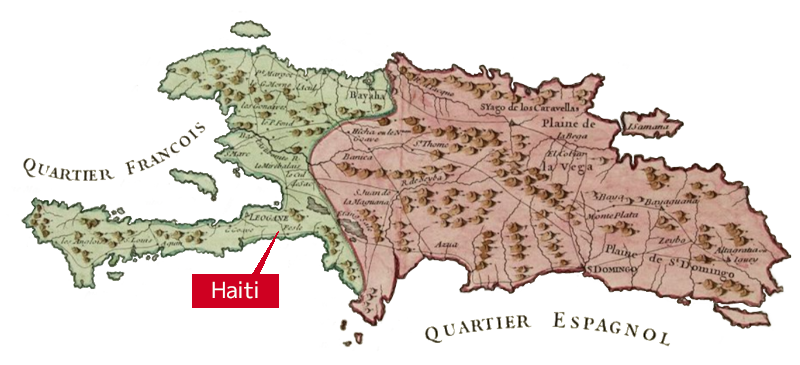
West side:French Haiti
East side:Spanish Dominica
From the 17th century onwards, a considerable number of French settled and colonised the West Indies. In particular, French settlers on the western side of the island of Española (present-day Haiti) ran sugar plantations and brought great wealth to France by using black slaves from Africa as labour.
However, the Haitian Revolution (1791-1804), which began in the late 18th century and was led by black slaves, led to the creation of a black republic and the declaration of independence of Haiti from France. The independence of Haiti in 1804 led to the migration of many white people of French descent from the West Indies to Louisiana in the Americas, a French possession. The French had a vast territory along the Mississippi River that extended into the interior of the United States, and New Orleans, the gateway to Louisiana, was home to a particularly large number of French whites (Creoles), and the city still retains a strong French cultural influence. Today, Creole cuisine refers to a style of cooking that is a mixture of the cultures of the New Orleans area, it was brought here by European immigrants.
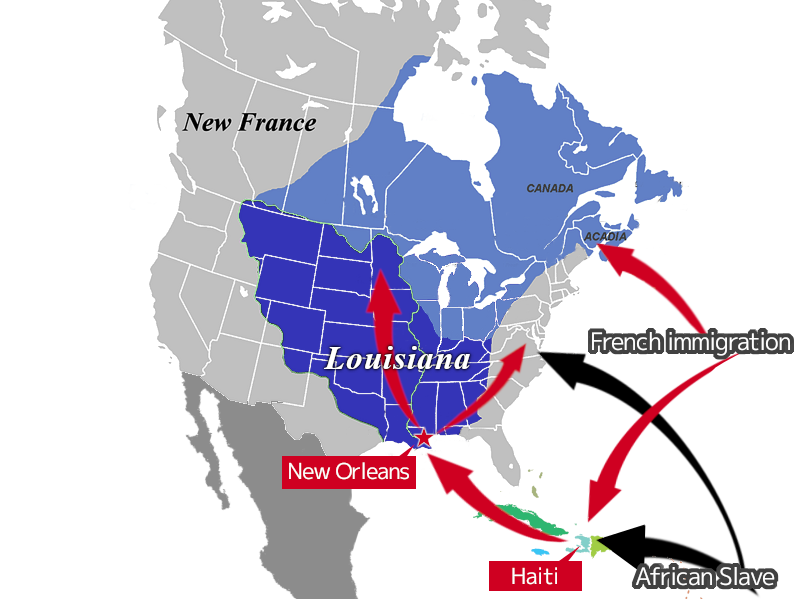
Migration of French Creoles
In 1803 Napoleon Bonaparte sold the French colony of Louisiana to the United States of America because the Haitian Revolution, which took place around the same time, had made it difficult for France to maintain the colony in the future. At this time, Louisiana was a vast area that spanned the 15 states of the present-day United States, as shown in the diagram above, and this led to the scattering of French settlers in Louisiana throughout the United States, including the South.
The United States is a country of English is the main language, however, it was not founded solely by British immigrants. It is estimated that about 11.8 million French-Americans still live in the United States today, and that about 1.6 million of them speak French at home. The 2000 census also reported that 450,000 people spoke a Creole language based on French. This means that the French language and culture is still very much present in the United States.
The taste of tomato ketchup
The tomato ketchup that came to the whole of America via the West Indies and Louisiana must have been different from the British, containing French nuances. The difference between English and French ketchup was, as emphasising again and again, the taste of fish (anchovies) and acidity (vinegar). In contrast to the English preference for these flavours, the French who settled in the West Indies and Louisiana seem to have eschewed them in favour of recipes that simply sought the flavour of the tomato.
As far as acidity is concerned, tomatoes at that time were not as well bred as they are today, therefore it is possible that they were quite acidic, and that the acidity would have been sufficient without the addition of vinegar. However, when it comes to the taste of fish, there is a clear contrast between England and France, and anchovies are never added to tomato ketchup in French way.
Tomatoes were not a common ingredient in cooking until the 19th century, although since they were originally from South America and had long been consumed in Mexico, it is likely that they would have become a common food in the West Indies and southern United States as well. The French immigrants who settled in the West Indies and the southern United States must have eaten a lot of tomatoes, and tomato ketchup must have spread to the French colonies in the West Indies and the southern United States before the British did.
As far as acidity is concerned, tomatoes at that time were not as well bred as they are today, therefore it is possible that they were quite acidic, and that the acidity would have been sufficient without the addition of vinegar. However, when it comes to the taste of fish, there is a clear contrast between England and France, and anchovies are never added to tomato ketchup in French way.
Evidence of this can be found in cookery books published in England and America in the late 17th and early 18th centuries, where tomatoes are described in English as "love-apple", which is French for "Pomme d'Amour". The reason for this description is that the French were more active consumers of tomatoes than the English at the time. It is also likely that the French in the colonised areas were better at using tomatoes in their cooking than the French in their own country, and that this was reflected in the recipe for tomato ketchup.
In fact, James Mease, who lived in Philadelphia, wrote a section on "Love apple: the tomato" in his encyclopaedia, The Domestic Encyclopedia, the third volume, in 1804, and noted that the tomato was rapidly expanding in Pennsylvania. . He also notes that stewed tomatoes make an excellent sauce for fish. The encyclopaedia also reports on the use of fine tomato ketchup by the French in a variety of dishes. As this encyclopaedia was written in the United States, the reference to the French here does not refer to the French in France, it must be the French immigrants who spread throughout the United States following the sale of Louisiana in 1803 and the independence of Haiti in 1804.
From these records of James Mease, there seems to be no doubt that the American tomato ketchup recipe is of French origin. The French immigrants (Creoles) who came to Louisiana in the southern part of the United States via the West Indies must have passed on the recipe for tomato ketchup to other parts of the United States after the independence of Haiti and the sale of Louisiana to the United States. So how did this French-derived tomato ketchup find its way into American cuisine.
The Virginia housewives in the spotlight again
Mary Randolph's The Virginia Housewife was undoubtedly one of the most influential cookbooks in early American cooking. This is evident in the subsequent cookbooks by women, The Kentucky Housewife and The Carolina Housewife, and in the respect that modern American Michelin star chefs have for Mary Randolph's recipes. Therefore re-consider about Mary Randolph's book, The Virginia Housewife, explain how tomato ketchup came to be associated.
If one looks at American cookbooks of the 19th century, one will find recipes for tomato soy alongside those for tomato ketchup. Originally, ketchup was the same thing as soy sauce, so it would be wrong to separate the two. Soy originally meant soy bean, however, in Britain the term was used to include soy sauce and fish sauces. However, from this time onwards, in the United States, it was common practice to describe them as two separate things in recipes. The reason for this is that in The Virginia Housewife, published in 1824, Mary Randolph divided her recipes into "tomato catsup" and "tomato soy". It was also the beginning of the divergence between what was traditionally called ketchup in England and what was called ketchup in America. It is the difference in the elements of ketchup in the America and the England that determines this.
To begin with, one element that differentiates "tomato soy" from "tomato ketchup" in American cookbooks is fermentation. In the case of tomato soy, the tomatoes are marinated in layers of salt and then left to cook for a period of time or days. It is likely that the sauce was fermented by this process and became tomato soy. In fact, soy sauce is a fermented food, and it was probably this element that led Mary Randolph to call it tomato soy. Tomato ketchup, on the other hand, is cooked immediately over a fire and does not involve any fermentation process. This is the first big difference.
Another factor is viscosity. This is because tomato ketchup is made to be viscous, whereas tomato soy is made to be smooth. The recipe for tomato ketchup includes a boiling process before bottling, it is sufficiently heated and concentrated to have a long shelf life. In the past, liquor or oil was also added to this process, this was also for the purpose of making it last longer. As the water evaporated and the viscosity increased, it became common knowledge in America that tomato ketchup had a thickening effect.
Throughout the history of ketchup, from its Chinese origins in fish sauces to its English origins in mushrooms and walnuts, ketchup has always been a light liquid. Some old recipes for ketchup claim that it can be stored for 20 years, or even 7 years, but ketchup was originally a fermented condiment that had to be able to be stored for a long time. This was probably based on the fact that ketchup was once transported across the equator from China and the East Indies to Europe without being damaged.
Therefore, European and American ketchup recipes also called for the addition of vinegar, bottling and tightly corking, and concentration by boiling. This was to preserve the product, and it is thought that boiling was used to concentrate it in order to increase its shelf life. It can be assumed that this is how tomato ketchup became a more viscous condiment.
Thus, through the elements of "fermentation" and "viscosity", it can be understood that another element began to be applied to the American ketchup made from tomatoes, which was different from the ketchup traditionally eaten in England. First of all, the element of "fermentation", which was required for the English ketchup, was removed from the American ketchup. Mary Randolph separated the "fermentation" element from the tomato ketchup by isolating it in the tomato sauce. Also, in terms of viscosity, the British ketchup was a light liquid, whereas the American tomato ketchup was thicker due to the addition of the concentration process. This was further advanced in Mary Randolph's later years, when she wrote in The Kentucky Housewife in 1839 that it was "boiled until quite thick, then cooled and bottled", and in La Cuisine Creole in 1885, Koizumi Yakumo wrote in his recipe "The viscosity of cream". In La Cuisine Creole in 1885, Koizumi Yakumo specified in his recipe "the consistency of cream", which shows how ketchup gradually changed to a more viscous consistency.
Mary Randolph's culinary back ground
Mary Randolph lived in Richmond, Virginia. Virginia is located in the middle of the East Coast, however, it was part of the Confederate States of America during the American Civil War, and is therefore in the American South. Virginia was the first place where British immigrants settled and is an important part of the story of the founding of the United States. It is also the birthplace of some of the country's earliest presidents, including Washington and Thomas Jefferson.
At the same time, Virginia was the centre of the most prolific trade in black slaves: in late August 1619, 20 black men were brought to Jamestown, Virginia, on a Dutch ship as the first slaves to be bought and sold there, marking the beginning of American slavery, which would last for 250 years. The capital of Virginia was later moved from Jamestown to Richmond, where a large market for black slaves was established, and slaves bought and sold there were sold throughout the South. Virginia was also a major producer area of tobacco, and its tobacco plantations were a source of great wealth. Black slaves were a major source of labour on these tobacco plantations and Richmond became a centre for the sale of black slaves.
Mary Randolph's husband, David Meade Randolph, also owned a tobacco plantation and was the first President of Washington to serve as a Federal Security Agent. Mary Randolph's father was also a plantation owner and a politician. John Rolfe, husband of Mary Randolph's ancestor Pocahontas, was the first person to start a tobacco plantation in America. namely, all of Mary Randolph's ancestors and relatives were wealthy tobacco plantation merchants and powerful political figures.
However, when Thomas Jefferson becomes president-elect, his husband, David Mead Randolph, who was politically opposed to Thomas Jefferson, will be dismissed from government office and the economic situation will change. From 1807 to 1819, Mary Randolph ran a Bording House in Richmond, Virginia, probably because of this change in economic background. Her experience, as her accommodation was also served, should have influenced The Virginia Housewife, which will be written after her. According to the 1810 census record, she also recorded that 12 black slaves were working in the dormitory, including Mary Randolph.
Historical cookbook author Karen Hess, in her commentary on The Virginia House-wife: 1984, makes the following interesting observation.
Historical notes and commnetaries on The Virginia House-wife, 1984, xxix
Amang the gentry of Virginia, black women slaves traditionally did the cooking. They had brought with them from Africa long familiarity with a number of hitherto little known products whose very use came to characterize southern cookery: gumbo, egg-plant,field peas, benne(an African name for sesame), yams(which resemble New World sweet potates in culinary use although not at all related), and possibly tomatoes. Among other products, sorghum and watermelon came from Africa and bananas were known there.
In addtion, many of these black cooks had passed through the way sation of the West Indies or knew those who had - where they picked up a number of dishes(see gumbo, pepper pot, and a-la-daube, for example) and tricks of seasoning from the ezuberant Creole cuisines of the islanders. The Caribs had early been all but exterminate but any
reamining women would have mingled with the black slave who were brought in, and so certain traces remained, particuraly in products used (various Capsicum peppers, most notably, and very likely tomatoes). More important, the vast majority of the populations were black, and they had made their own colorful, irreverent masters, with invitable mingling. These creole cuisines were to color Virginia cookery to an extend which has not been fully appreciated.
Mrs. Randolph left her own imprint on these Virginia recipes, to be sure; her perceptiveness and culinary curiosity added new dimensions to Virginia cookery. But she was working within an already sophisticated cuisine, a harmonious interweaving of coloful Indian, African black, and Creole strands in the warp of the fine cookery of seventeenth and eifhteenth century England, all of which had been transformed in various ways in responce to local produce and talents. In short, an authentic American cuisine.
This is a very important commentary and explains very well how American cuisine came to be. Mary Randolph's achievement was to give to cooking a new value system, different from that of European cooking, because of the unique mixture of races and cultures in America. This was due to two important factors. The first is the "tomato" and the second is "Creole".
In 1776, the United States of America gained its independence from the colonies and began its journey as an independent nation, exactly at the same time as Mary Randolph (1762-1828) lived. Although politically independent from Great Britain, the United States was still a young nation, with no culture or history of its own. However, because it was such a young country, it had the potential to transform itself according to the lives and values of the people who made it up.
Against this background, it should be mentioned that Mary Randolph's contribution was to establish a new American cuisine also. Her active use of tomatoes, which at the time were still believed to be poisonous, and the fact that she wrote 17 recipes for tomatoes, is another indication of her positive attitude towards these new vegetables and their untapped flavours. It is also important to note that it was actually black slave women who were the first to actively use such an ingredient in their cooking.
In this sense, it is important to note that Mary Randolph lived in Richmond, Virginia. This was a politically important place in the founding of the United States and one where her identity as an early American was most challenged. Her family's strong involvement in early American politics and government in such a place must have had a profound influence on her way of life and her values.
Moreover Virginia was a centre for the buying and selling of black slaves. Mary Randolph herself was born into a plantation family, and her family must have had a large number of black slaves. In the American South, where black slave women were responsible for cooking, Mary Randolph must have been familiar with a mixed culinary culture. She has twelve black slaves in the 1810 census during the period she ran the boarding house suggests that Mary Randolph's cooking must have been strongly influenced by elements of Creole cuisine, a mixture of African and West Indian cultures that had taken root in America.
Mary Randolph's The Virginia Housewife, written in 1824, marked a "break-up" with this style of cooking, which at the time was still being published and appreciated in America. Accurately, the word "break-up" is incorrect, "fusion" would be more accurate, however, the word "break-up" may also be an appropriate expression in the sense that it proposes a new way of thinking about food that is different from the traditional English style and introduces new recipes other than the past recipes. From this point of view, there is no doubt that The Virginia Housewife is an important book in the history of American cuisine.
American Tomato Ketchup
Returning to ketchup. In the past, ketchup made in England had anchovies in. However, if you look at the literature on American tomato ketchup, you will find that no anchovies were added. In other words, the American tomato ketchup have made a clear "break-up" with the British ketchup. ("break-up" is the most accurate word here).
It has already been explained earlier that early American ketchup had a Creole element. The Creole culture of the American South, through the cooking of black slaves via Africa and the West Indies, and the use of an emerging vegetable, the tomato, gave rise to a uniquely American ketchup.
It is interesting to note that the Englishman, then Japanese, Lafcadio Hearn, lived in New Orleans for 10 years between 1877 and 1887 and wrote a book about American ketchup, La Cuisine Creole, in the very heart of Creole culture and cuisine, and that he mentions a recipe for tomato ketchup in the book. In La Cuisine Creole there are three types of tomato ketchup and one type of tomato sauce.
Tomato Catchup
Superior Tomato Catcup
Tomato Catcup
Tomato Catcup, Recipe for making small quantity
Tomato Soy
Green Tomato Soy, or Sauce
It is astonishing that in the transitional period before tomato ketchup as we know it today in the United States, an exotic Lafcadio Hearn was drawing up Creole cuisine and tomato ketchup itself. It is also important to note that, more than 60 years after Mary Randolph once treated tomato ketchup and tomato sauce separately, there is still a strong distinction between ketchup and soy. It is also important to note that the distinction between ketchup and soy sauce is still made, ensuring that the English fermented soy sauce was distinct from the tomato ketchup used by the Creoles.
The fact that he was able to document tomato ketchup in such a commercial work is no doubt a tribute to his keen literary eye, and to the objective position from which he approached Creole culture. He was a man of observation and a man of objectivity. The culinary background and the development of a global culinary culture will be discussed further in the section on Creole cuisine , which we encourage you to consult.
So far we have seen how ketchup in the USA began and developed. Now we would like to take a look at how tomato ketchup became popular in the United state of America.
The tomato ketchup giant
One of the world's leading manufacturers of tomato ketchup is Heinz. Heinz was founded in 1869 by Henry J. Heinz (1844-1919) and is still headquartered in Pittsburgh, Pennsylvania, USA.
Although ketchup originated in China and Southeast Asia, was brought to England during the Age of Discovery, and developed into tomato ketchup in colonial America under the influence of Creole and black food culture, it was Heinz, a German-American, who succeeded in further expanding ketchup in America, which this is more showing the fusion and complexity of ketchup.
In 1869, at the age of 25, Heinz started a successful business bottling and selling horseradish, which went bankrupt in 1875 due to the financial crisis. The following year, in 1876, he began to manufacture and sell tomato ketchup, which he turned into a major business. One of the reasons for this success was that the tomato ketchup was sold in transparent bottles to emphasise food safety and to improve quality.
Since then, Heinz has expanded its market to the rest of the world and according to statistics from Euromonitor International in 2018, the market share for ketchup is as follows.
1 position: Kraft Heinz (USA) 30%
2 position: Unilever (UK and Netherlands) 8.4%
3 position: Kagome (Japan) 4.3%
4 position: Del Monte Pacific (Singapore) 3.6%
5 position: Orkla (Norway) 2.2%
With a turnover of 28,285 million yen in 2020 (including products other than tomato ketchup), Kraft Heinz is the undisputed giant of the tomato ketchup industry. Although its share of the global market is only around 30%, it is undoubtedly the world's strongest tomato ketchup brand, with a 60% share in the US and over 80% in the UK. In Japan, however, Kagome's share is more than 50% and Kikkoman (Del Monte) has more than 20%, meaning that its share is less than 10%.
In any case, it is surprising that a sauce that originated in one region of the East (Fujian) has taken the world by storm after a long journey of hundreds of years, and has grown into such a huge industry. It is a pity, however, that so little is said about the history of tomato ketchup, and that so few people seem to know about it.
Author's Comments
So far I have told you about the long and complex cultural journey of ketchup that has led to the present day. There are many sauces in the world, but perhaps no other sauce has been so accepted and used by people all over the world. To conclude this journey, we insert a cutaway drawing to accompany Lafcadio Hearn's manuscript "Winter Jourany to JAPAN", which appeared in Harper's Magazine, November 1890 issue.

Lafcadio Hearn(小泉八雲)
I checked the actual article in Harper's Magazine, "Winter Jourany to JAPAN", and it does not have this sketch, so it seems that it was drawn but not published in the magazine. It is believed that this is a sketch by C. D. Weldon of Hearn as he recalled his departure from New York for Japan.
It is also the first of Jonathan Cott's biographies of Lafcadio Hearn, Wandering Ghost: The Odyssey of Lafcadio Hearn, which describes Hearn as "wearing a worn linen suit and a hat, a small boot in his right hand and a worn suitcase in his left - with the initials L H on the back".
Also Elizabeth Bisland, a woman who was a close friend of Lafcadio Hearn's in New Orleans, wrote the following memories of him after his death.
The Life and Letters of Lafcadio Hearn
He was at this time a most unusual and memorable person. About five feet three inches in height, with unusually broad and powerful shoulders for such a stature, there was an almost feminine grace and lightness in his step and movements. His feet were small and well shaped, but he wore invariably the most clumsy and neglected shoes, and his whole dress was peculiar. His favourite coat, both winter and summer, was a heavy double-breasted “reefer,” while the size of his wide-brimmed, soft-crowned hat was a standing joke among his friends. The rest of his garments were apparently purchased for the sake of durability rather than beauty, with the exception of his linen, which, even in days of the direst poverty, was always fresh and good. Indeed a peculiar physical cleanliness was characteristic of him—that cleanliness of uncontaminated savages and wild animals, which has the air of being so essential and innate as to make the best-groomed men and domesticated beasts seem almost frowzy by contrast.
C. D. Weldon's sketch creates an atmosphere that has exactly the characteristics of Lafcadio Hearn as described by Elizabeth Bisland. Lafcadio Hearn wrote of his "Winter Journey to Japan", but it was more than a journey, it was a permanent stay in Japan, where the drifting traveller ended his life as Koizumi Yakumo.
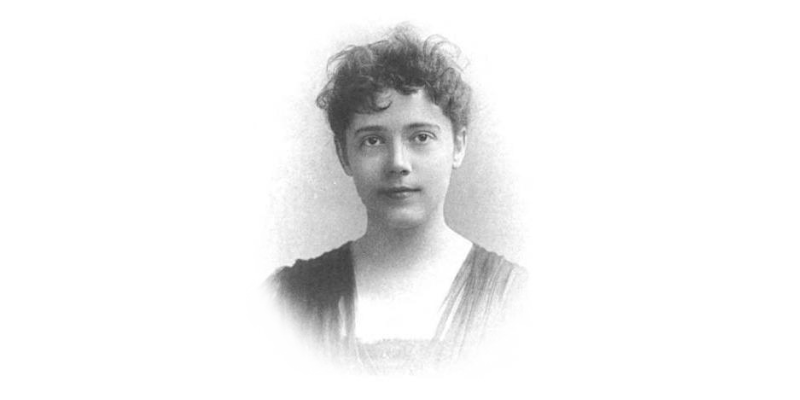
Elizabeth Bisland(1861-1929)
This time, in researching the history and journey of ketchup, I was struck by the similarities between the life of Lafcadio Hearn and the journey of ketchup. Originating in the Orient, ketchup was brought back to England by the British from the East Indies, where it developed and became a popular food, but over time the ketchup was replaced by tomatoes in the United States and became an integral part of American food culture, influenced by Creole cuisine.
On the other hand, the life of Lafcadio Hearn, he was also born of British nationality, but emigrated to the United States to live as a gentile, and then to the Orient, where he eventually acquired the name Koizumi Yakumo(小泉八雲). It is tempting to project Lafcadio Hearn's life onto ketchup, a product which, despite its different route and landing place, has retained its own identity and has been accepted by people in different times and places.
Lafcadio Hearn, like ketchup, also has New Orleans in common. Lafcadio Hearn stayed in New Orleans, a city with a rich Creole culture and cuisine, where he wrote a cookbook called La Cuisine Creole, in which he left several recipes for ketchup. Lafcadio Hearn and ketchup have come to the other side of the world, and yet they have been well adapted and accepted locally. It is fair to say that these were the common denominators between them.
The long journey of the ketchup from the East to the West and the resulting change in ”tomato” ketchup overlaps with Lafcadio Hearn's journey from the West to the East in the opposite direction. Just as Lafcadio Hearn took on the identity of Koizumi Yakumo in Japan, ketchup also changed its shape and recipe to become tomato ketchup, which was accepted by the world. In Japan, drinkers often say that "a drop of liquor is a drop of blood", and ketchup, as it seems, "a drop of ketchup is a drop of blood"... As I learn more about the history of ketchup, I find myself wanting to describe it in this way, and this is the honest feeling I have now. I would like to end my long explanation of ketchup by reminding you that ketchup is one of the most important products of modern food culture, born at the end of a long journey.
Reference
Bell, E.M. (1944), Thomas Jefferson's Garden Book, The American Philosphycal Society, Philaephia.
Bisland, E. (1906), The Life and Letters of Lafcadio Hearn, Riverside Press, Houghton, Mifflin and Co. ; Cambridge, Boston.
Bradley, R. (1727), The country housewife and lady's director, in the management of a house, and the delights and profits of a farm, D.Browne, at the Black Swan without Temple-Bar and T. Woodman, in Ruffel-Freet, Covent-Garden, London.
Bryan, L.P. (1839), The Kentucky Housewife, Stereotyped by Shepard & Stearns, West third Street, Cincinati.
Dunlop, S.B. (1795), Receipt Book of Sally Bella Dunlop [Manuscript]
Eales, M. (1742), The compleat confectioner: or,The art of candying and preserving in its utmost perfection, R.Montagu, at the General Post-Office, The Corner of Great Queen street, near Drury-Lane, London.
Egan, M and Winiecki, S. (2017), Richmond's Culinary History: Seeds of Change, American Palate A Division of the History Press, Charleston, SC.
Glasse, H. (1747), The Art of Cookery Made Plain and Easy, L.Wangford, in Fleet-street, London.
Hearn, L. (1885), La Cuisine Creole, F. F. Hansell & bro., ltd, New Orleans.
Hearn, L. (1890), Harper's Magazine, Nov 1890"Winter Jourany to JAPAN".
Hess, J.L and Hess, K. (2000), The taste of America, University of Illinois Press, Urbana, IL
Hunter, A. (1804), Culina Famulatrix Medicinae:Or, Receipts in Cookery, T.Wilson and R.Spence, High Ousegate:and sold by J. Mawman, Bookseller in the Poultry, London.
Jurafsky, D. (2014), The Language of Food: A Linguist Reads the Menu, W. W. Norton & Company.
Jia, S. (532-549), Qimin Yaoshu, volume 8
Kierner, C.A, (1998), Beyond the household : women's place in the early South, 1700-1835, P203-207, Cornell University Press, Ithaca, NY.
Kitchiner, W. (1817), The Cook's Oracle; and Housekeeper's Manual, Samuel Bagster, No.15, paternoster-Row, by J.Moyers, Greville street, London.
Koizumi, T and Ishige, N. (2010), The magical power of fermented foods, PHP, Tokyo
Lloyd, M. (1809), Martha Lloyd's Household book [Manuscript] .
Lockyer, C. (1711), An Account of the Trade in India, Samuel Crouch, at the corner of Pope's head Ally in Cornhill, London.
Mason, C. (1777), The Lady's Assistant for Regulating and Supplying Her Table, J.Walter, at Homer's-Head, Charing Cross, London.
Mease, J. (1812), Archives of Useful Knowledge, Vol.Ⅱ, David Hogan, Philadelphia.
Mrs. Michel, (1795), Approval Recipes [Manuscript] .
Polo, M. The Travels of Marco Polo
Randolph, M. (1836), The Virginia Housewife, John Plaskitt, 218 Market street, Baltimore.
Randolph, M and Hess, K. (1984), The Virginia House-wife』 Historical notes and commnetaries on The Virginia House-wife, University of South Carolina Press, South Carolina, Columbia.
Rundell, M.E. (1809), A new system of domestic cookery, W.Wilson, St. John's Square, London.
Rutledge, s. (1855), The Carolina housewife or, House and home, J. Russell, Charleston, S. C.
Staveley, J. (1693-1694), Receipt book of Jane Staveley, LUNA: Folger Manuscript Transcriptions Collection.
Shurtleff, W and Aoyagi, A. (2012), History of Soy Sauce (160 CE to 2012), Soyinfo Center.
Smith, A.F. (1994), The Tomato in America: Early History, Culture, and Cookery, University of South Carolina Press, Columbia, S.C.
Smith, A.F. (2001), Pure ketchup : a history of America's national condiment, Smithsonian Institution Press, Washington, DC.
Smith, E. (1729), The Compleat Housewife, or, Accomplish'd Gentlewoman's Companion is a cookery book, 3rd ed,. J.Pemberton, at the Golden Buck,over against St. Dunstan's Church in Fleet-street, London.
Takada, H. (2010), Zayton Senshu - Marco Polo's East (1)-, OIU journal of international studies, Osaka.
Takeuchi, R. (2021), The history of foreign food companies in Japan: the case of H.J. Heinz.Yokohama business review, Vol.42, 2nd.
Unkown. (1720), Cookbook [manuscript], LUNA: Folger Manuscript Transcriptions Collection.
Yagyu, T. (2010), The development of slave markets in antebellum Virginia: cases of Richmond and Alexandria, The Hiyoshi review of social sciences, No.21.
